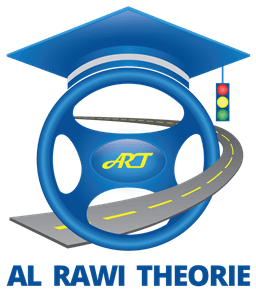


During the exam, if you reload the page, it will be counted as a new exam. This means a number will be decreased from the number of times allocated to you
The maximum duration of the exam is 45 minutes
The exam consists of three parts
Part 1
consists of 25 questions about recognizing danger
For each question, you have 8 seconds to answer
At least 13 of the 25 questions must have been answered correctly
Part 2
consists of 12 questions about the knowledge you need to participate in traffic
Take the time to read the questions carefully before you answer
At least 10 of the 12 questions must have been answered correctly
Part 3
consists of 28 questions about traffic insight
Take the time to read the questions carefully before you answer
Of the 28 questions, you must have answered at least 25 correctly
You must succeed in all parts to be successful

Part 1 is done
You must succeed in all parts to be successful
Part 2
consists of 12 questions about the knowledge you need to participate in traffic
Take the time to read the questions carefully before you answer
At least 10 of the 12 questions must have been answered correctly

Part 2 is done
You must succeed in all parts to be successful
Part 3
consists of 28 questions about traffic insight
Take the time to read the questions carefully before you answer
Of the 28 questions, you must have answered at least 25 correctly
Results Explanations
The position on the road, preparing for a turn, overtaking, maximum speed, stopping, and parking
Mistakes in this category:
Giving right of way at intersections, giving way when turning, and giving way to pedestrians
Mistakes in this category:
Among others, driving on a highway or in a yard. And what you may and may not do, for example, with a military convoy or during a special maneuver
Mistakes in this category:
The use of lights, giving signals, seating arrangements, the use of seat belts, and responding in emergency situations such as breakdowns and accidents
Mistakes in this category:
Traffic signs, traffic lights, road markings, and instructions from, for example, police officers
Mistakes in this category:
What knowledge and skills are important for safe traffic participation and for driving economically? And what are the risks?
Mistakes in this category:
The general provisions from the traffic legislation and documents related to the use of the car
Mistakes in this category:
The requirements set for the car such as load and lighting, and knowledge of, for example, dashboard symbols and the use of mirrors
Mistakes in this category:
Recognizing danger in different situations and determining what to do: braking, releasing the gas, or doing nothing
Mistakes in this category:

Continue at your current speed as there is no danger ahead. The weather is foggy but the visibility is good.
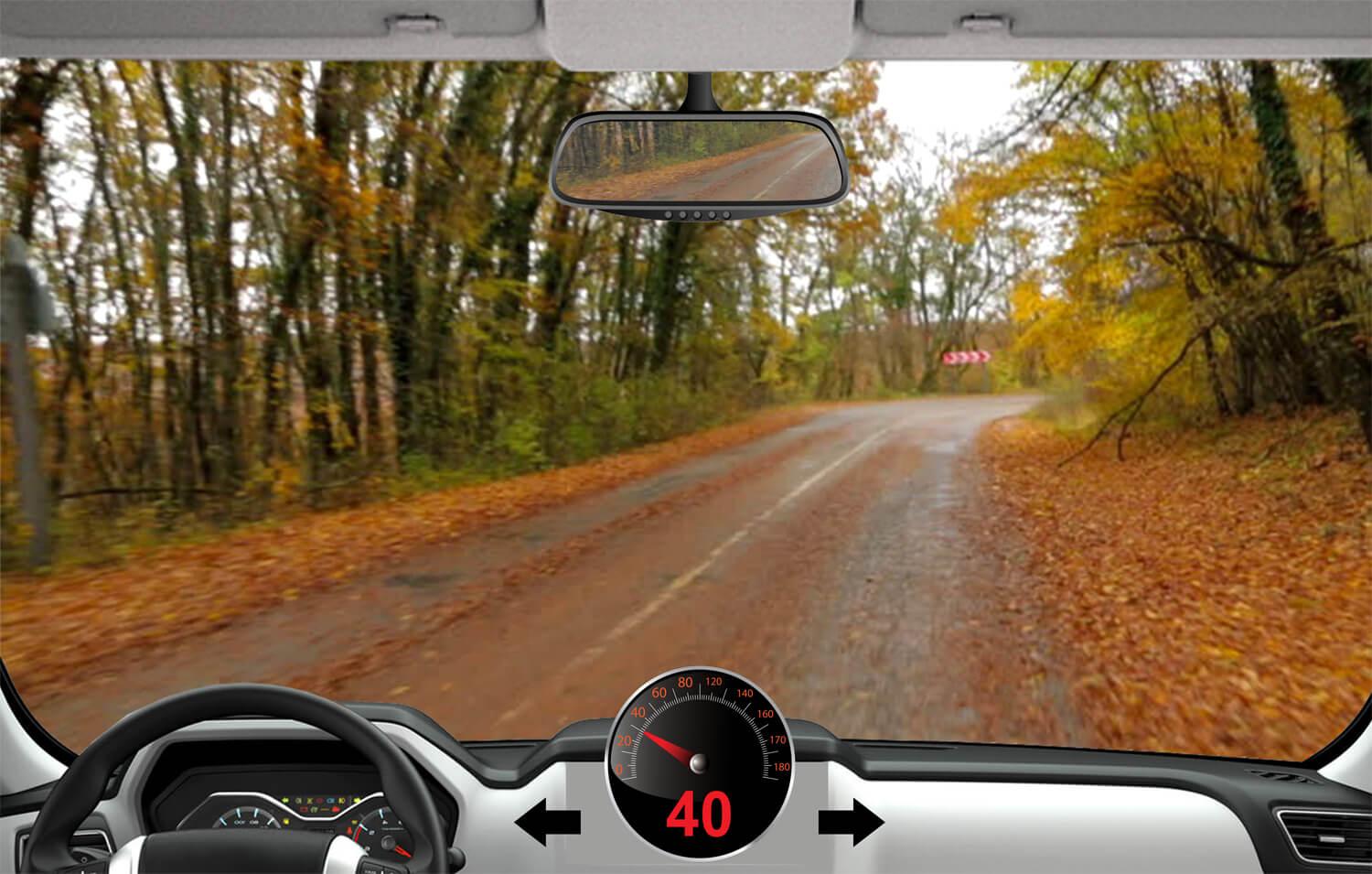
Release the accelerator to slow down when entering a turn. The road may be slippery due to the fallen leaves and wet ground. Proceed with caution.
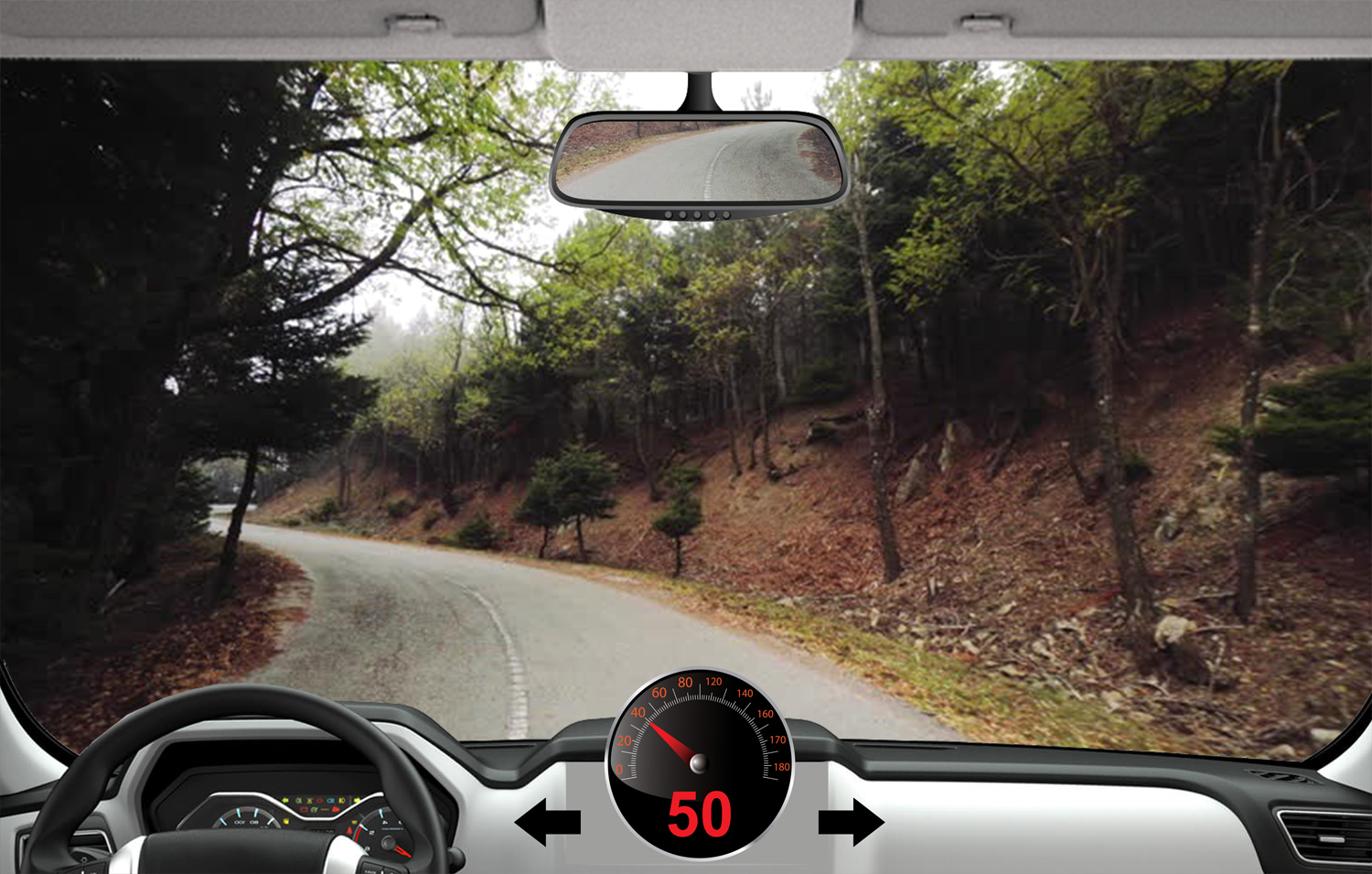
Brake to slow down. There is a curve ahead, proceed at a lower speed because you can't see oncoming traffic.
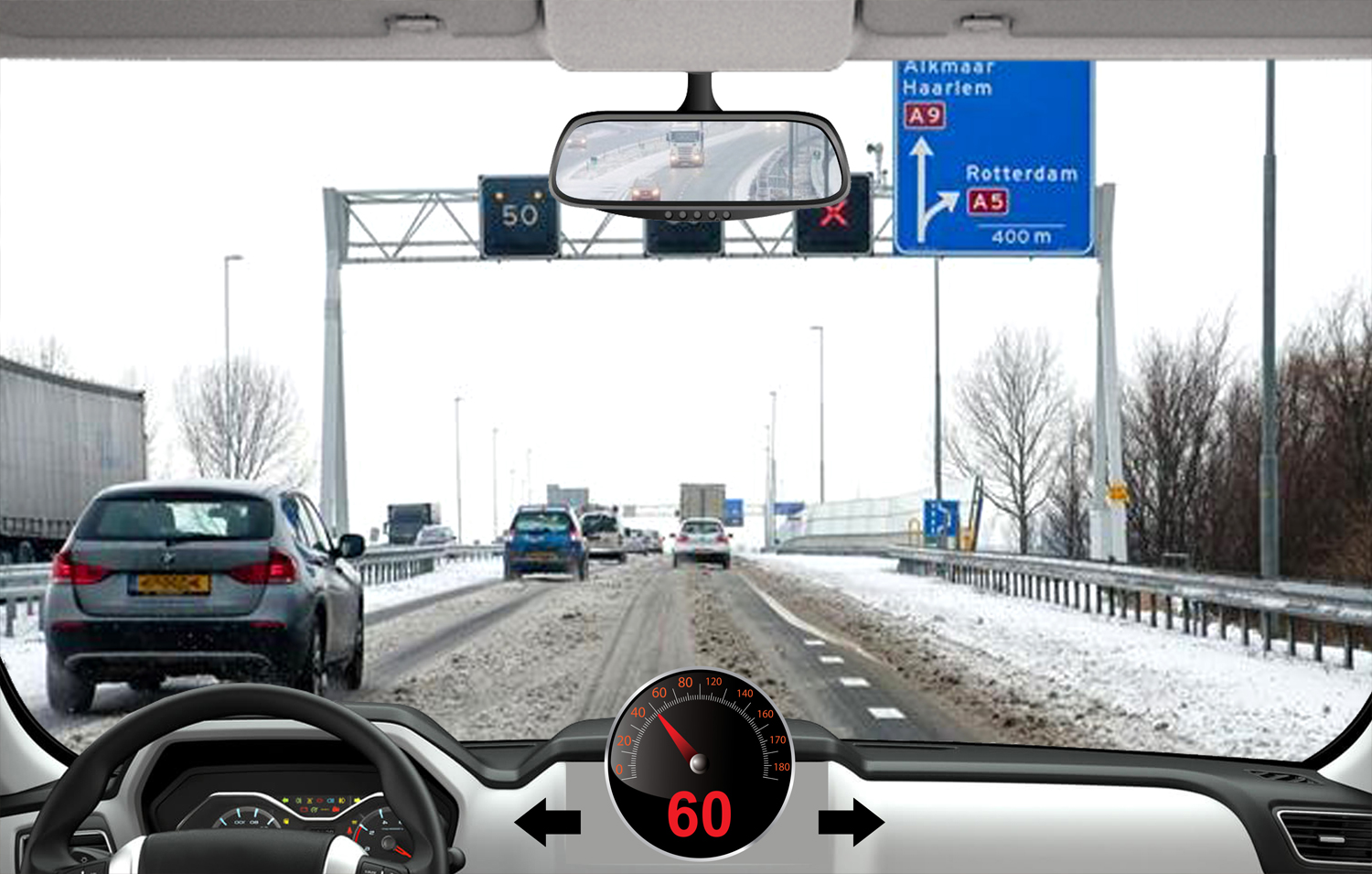
Release the accelerator to slow down to the speed indicated on the electronic board (50 km/h). Avoid using the brakes in the snow to avoid slipping.
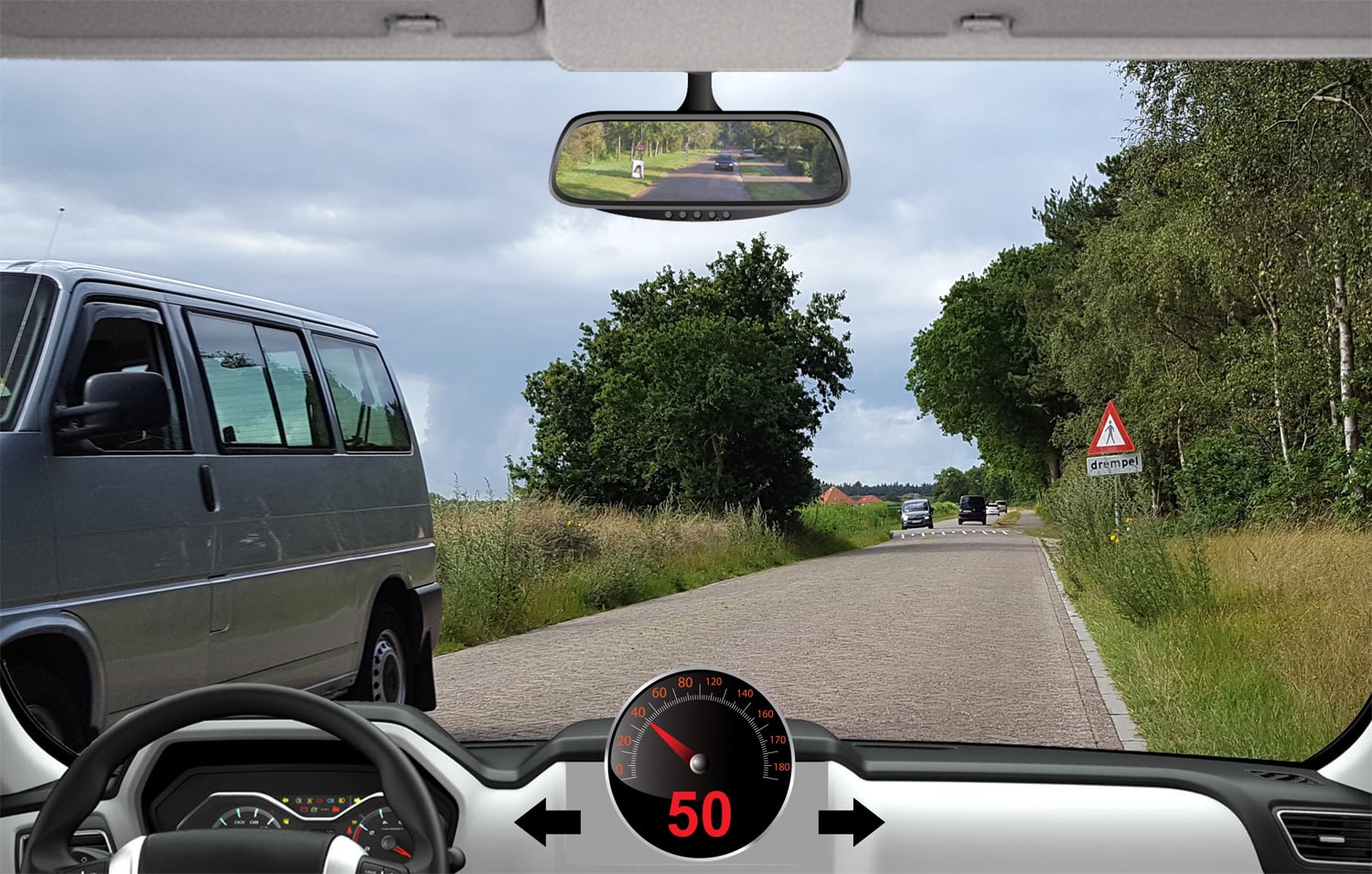
Brake softly and proceed carefully. You are driving too fast for approaching a speed bump, on a narrow road with oncoming cars.
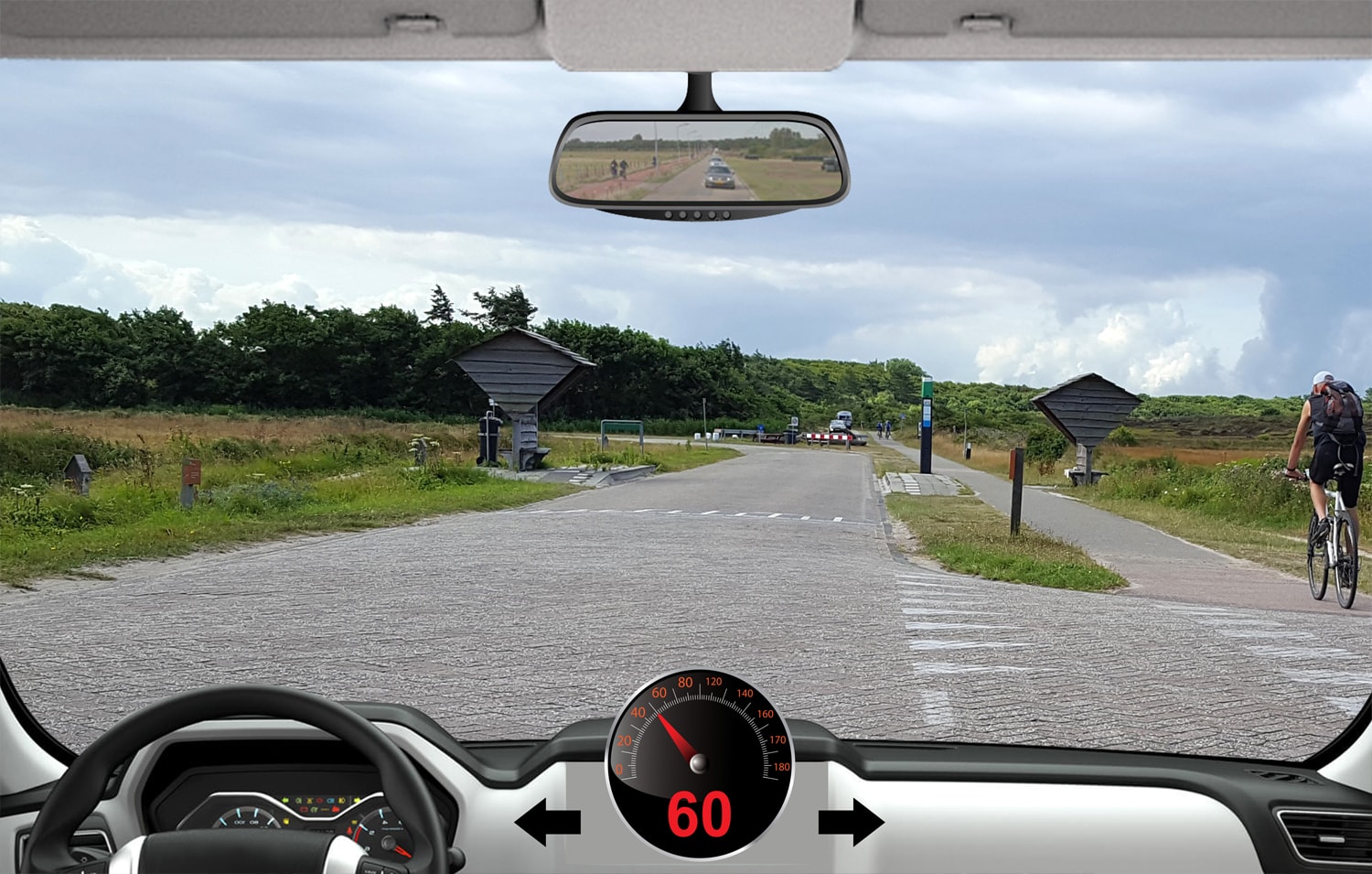
Brake to slow down and pass the curve at a lower speed. You are approaching a speed bump, it is very close, so you must slow down immediately.
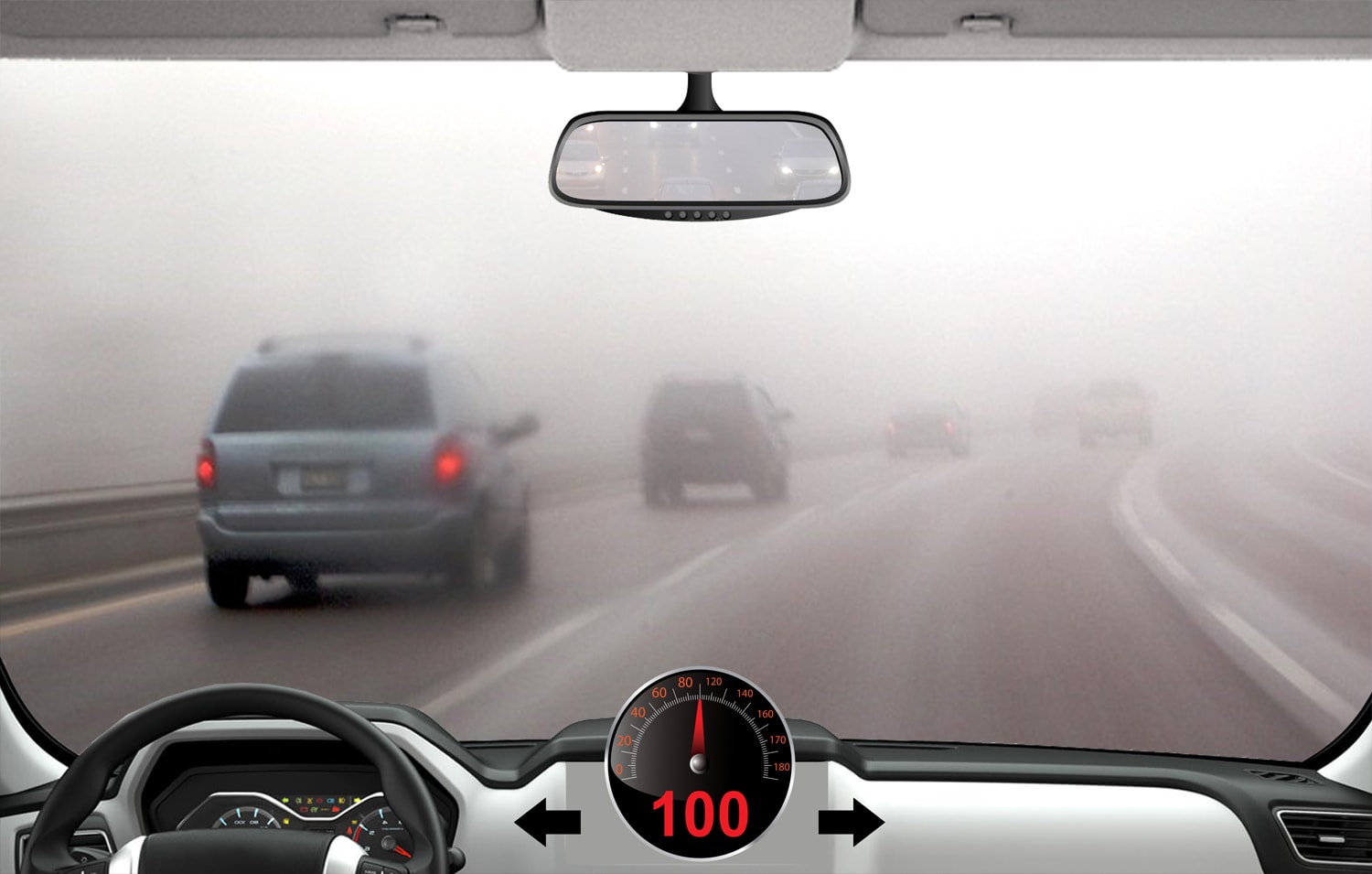
Brake and proceed with caution, because there is a lot of traffic in front of you and the visibility is bad.
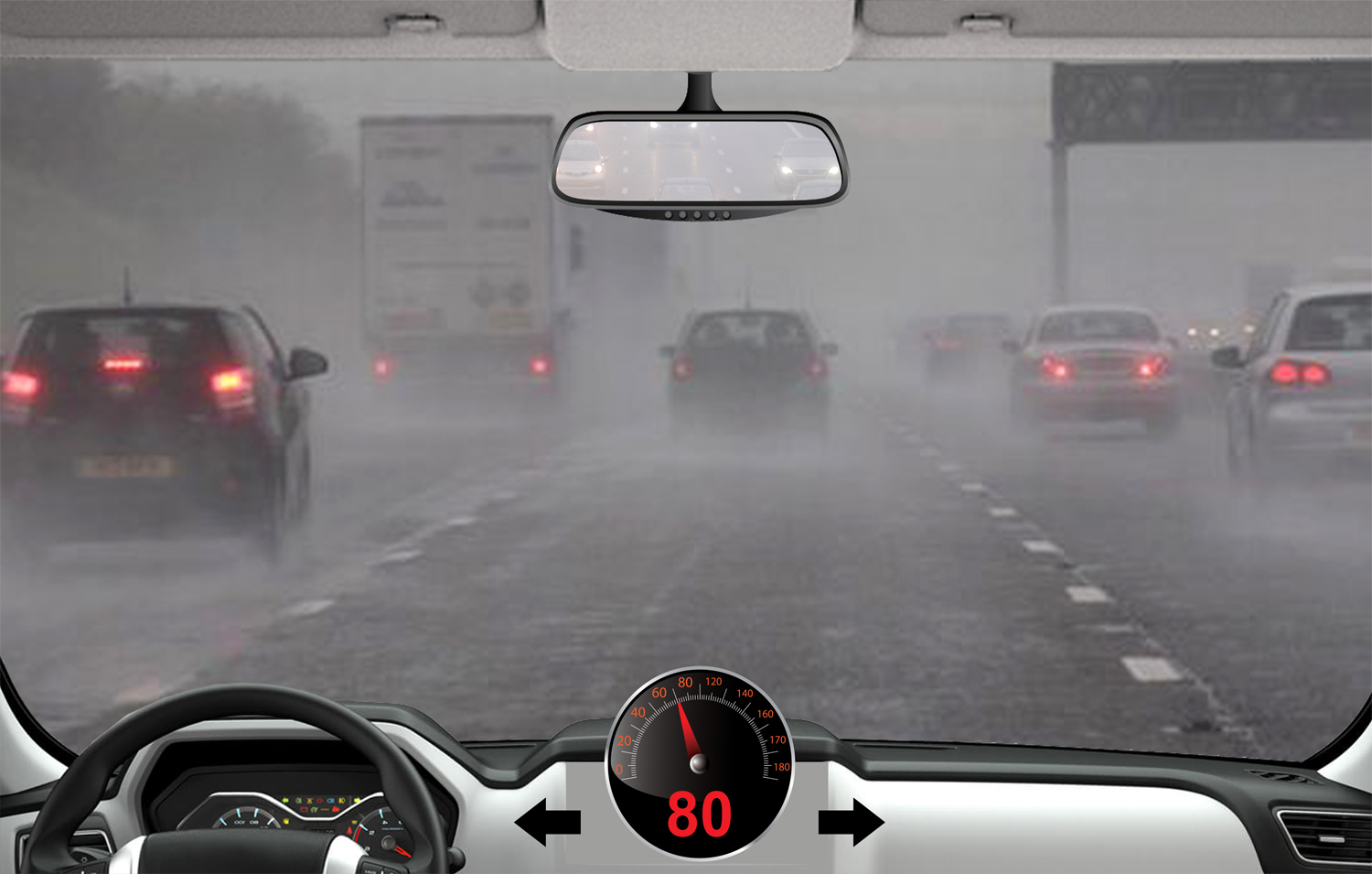
The rain is very heavy and your following distance is insufficient if the cars ahead of you brake suddenly. Keep more following distance and proceed with care.
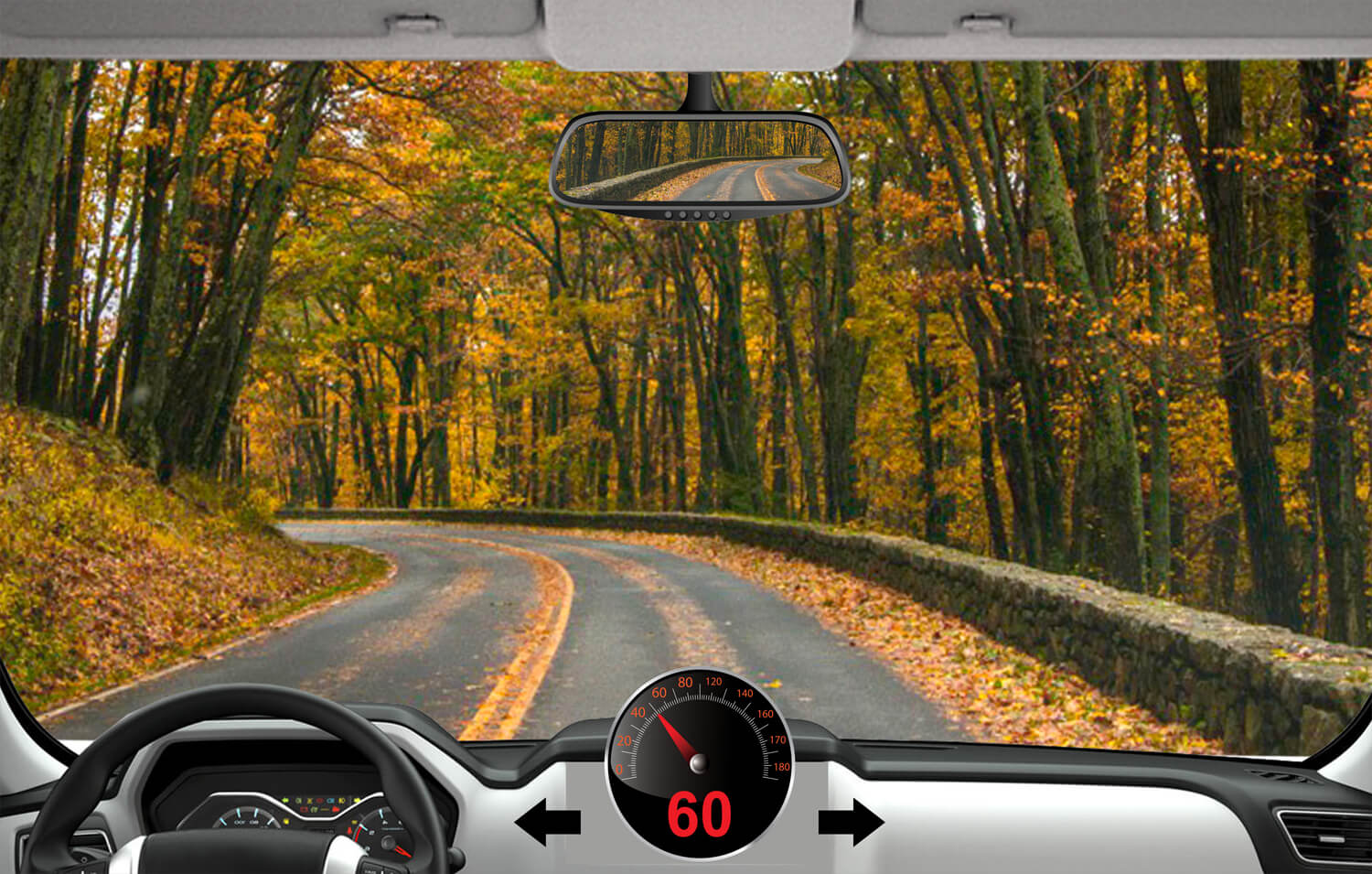
Brake softly, because you are approaching a curve and you don't have enough time to reduce your speed by releasing the accelerator. You should pass the curve at a lower speed because you can't see oncoming traffic.
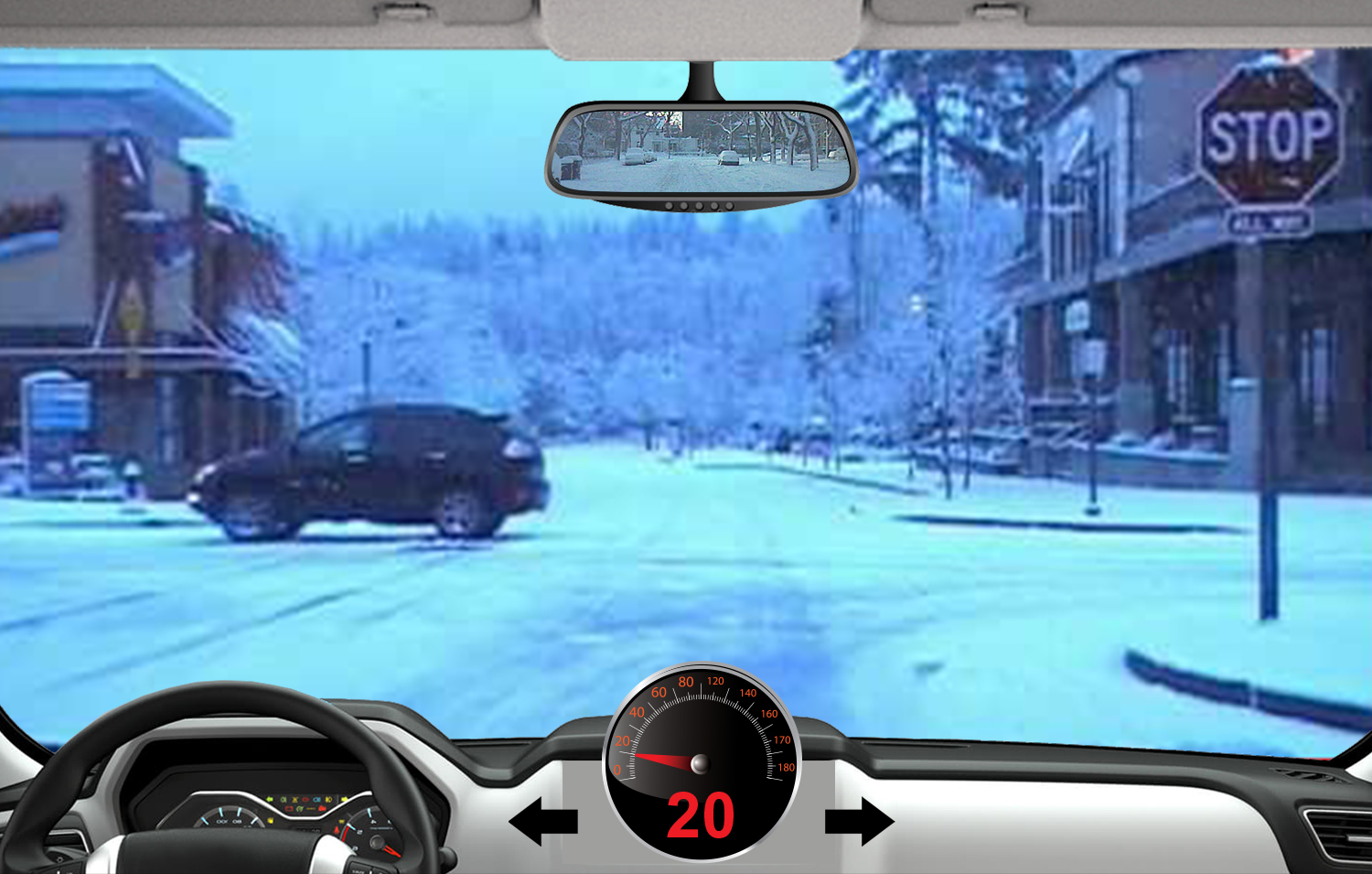
The stop sign means you must stop even if the junction is empty. The road is slippery so brake softly and proceed carefully.
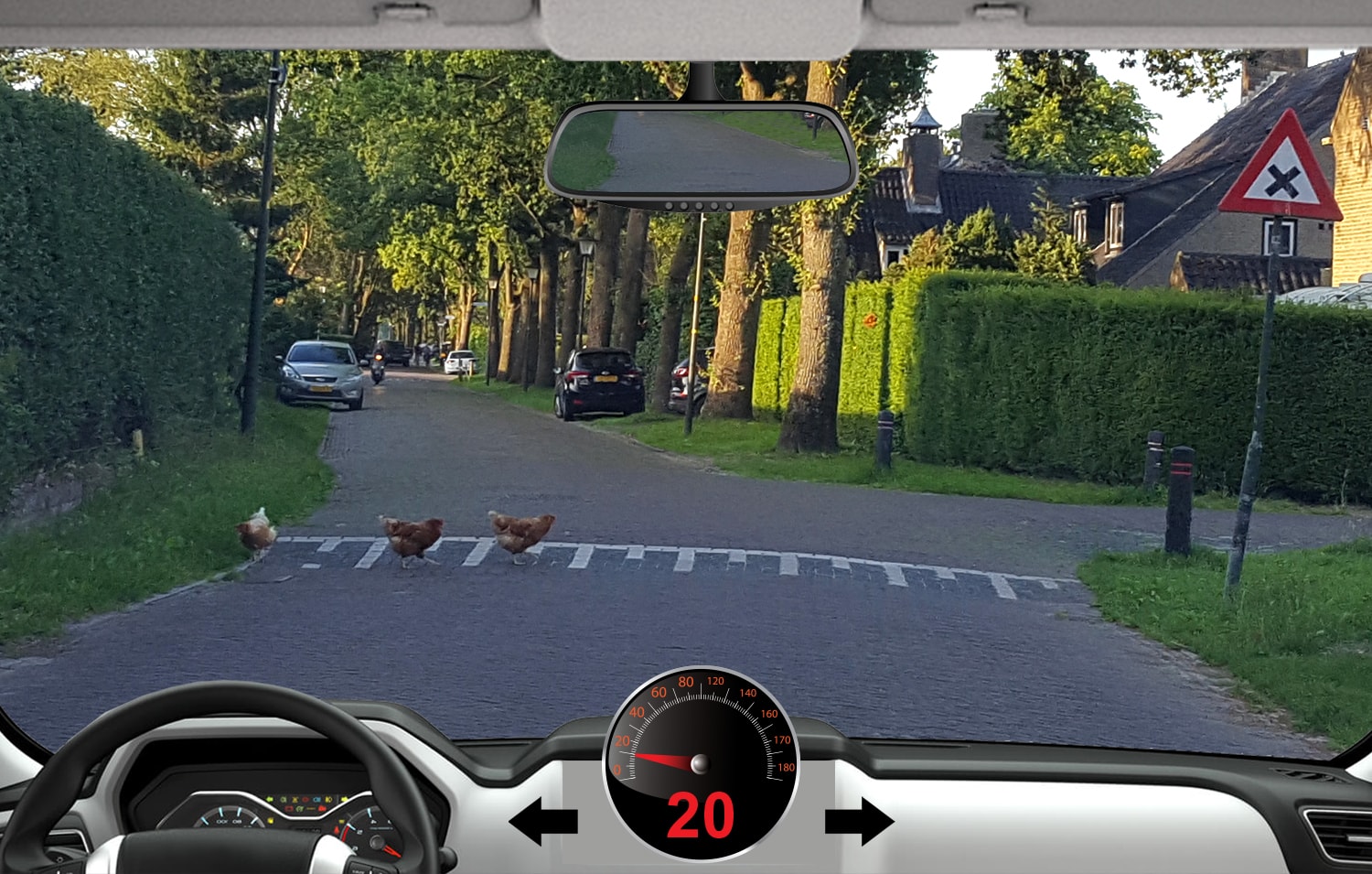
Brake because animals and birds are unpredictable and may cross the road suddenly. Proceed when the road is clear.
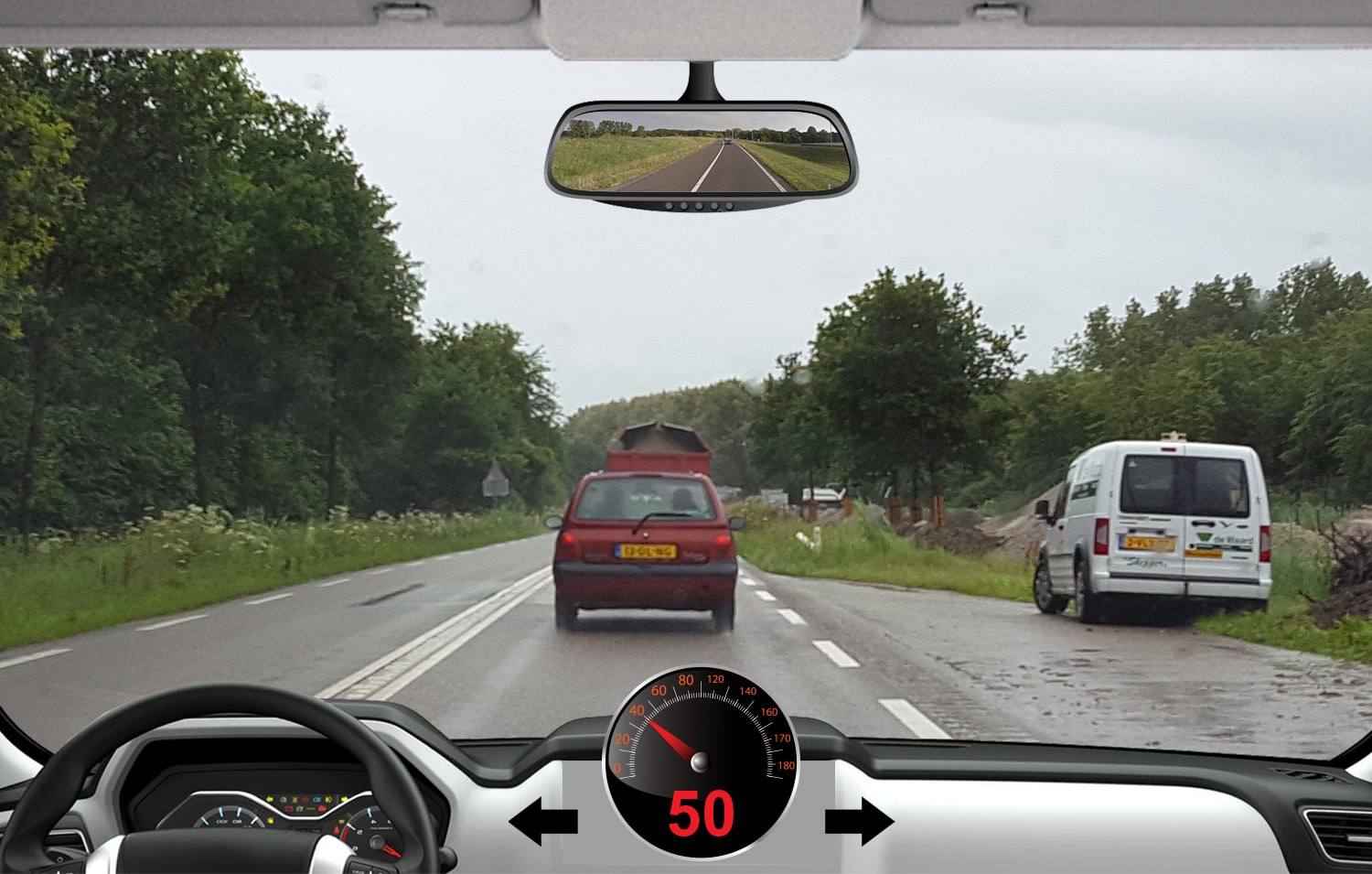
Release the accelerator to obtain a greater following distance between you and the vehicle in front of you.
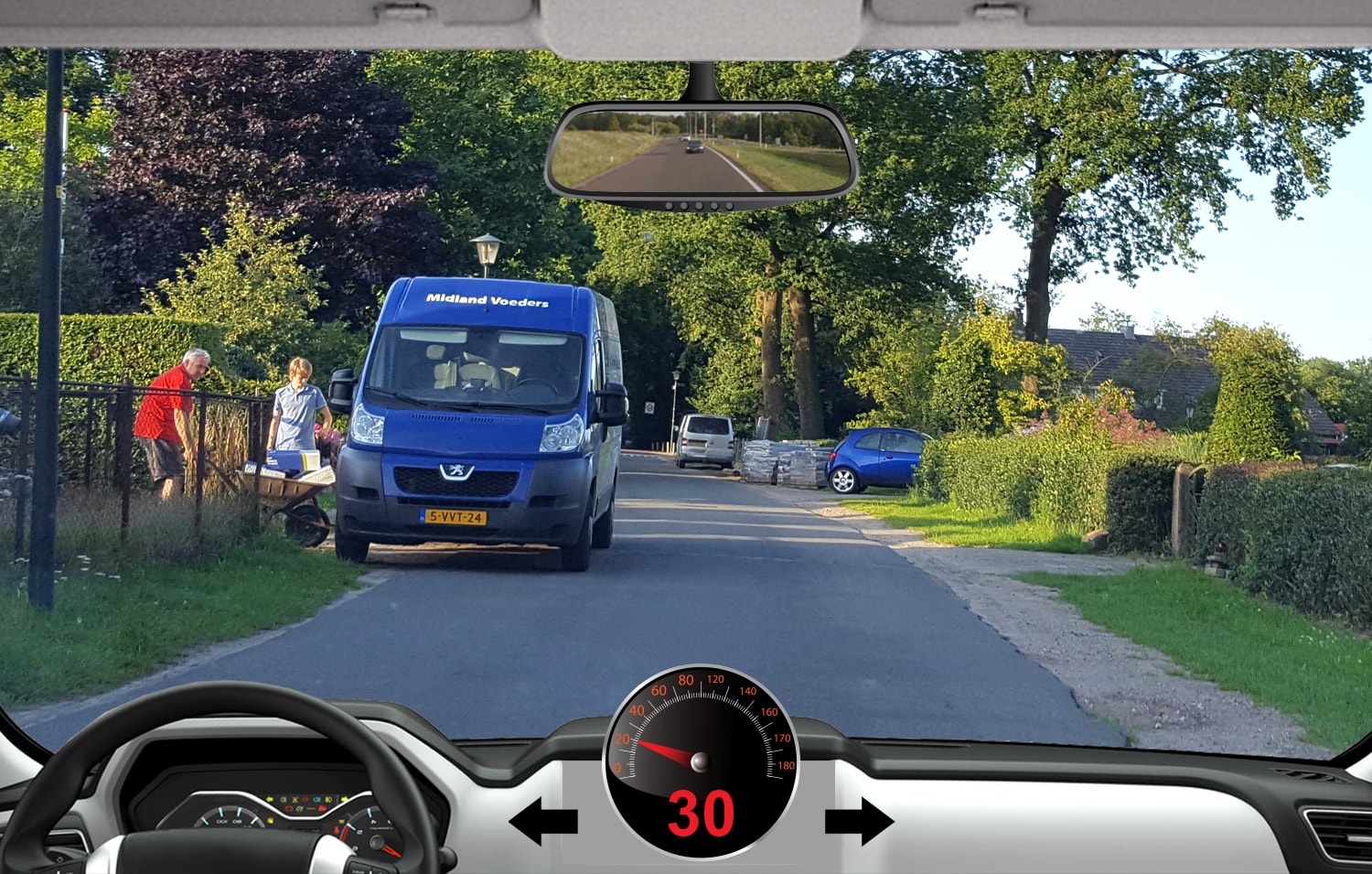
Proceed with caution on this street. Someone may step out from behind the blue van, so move to the right of this narrow road and proceed very carefully.
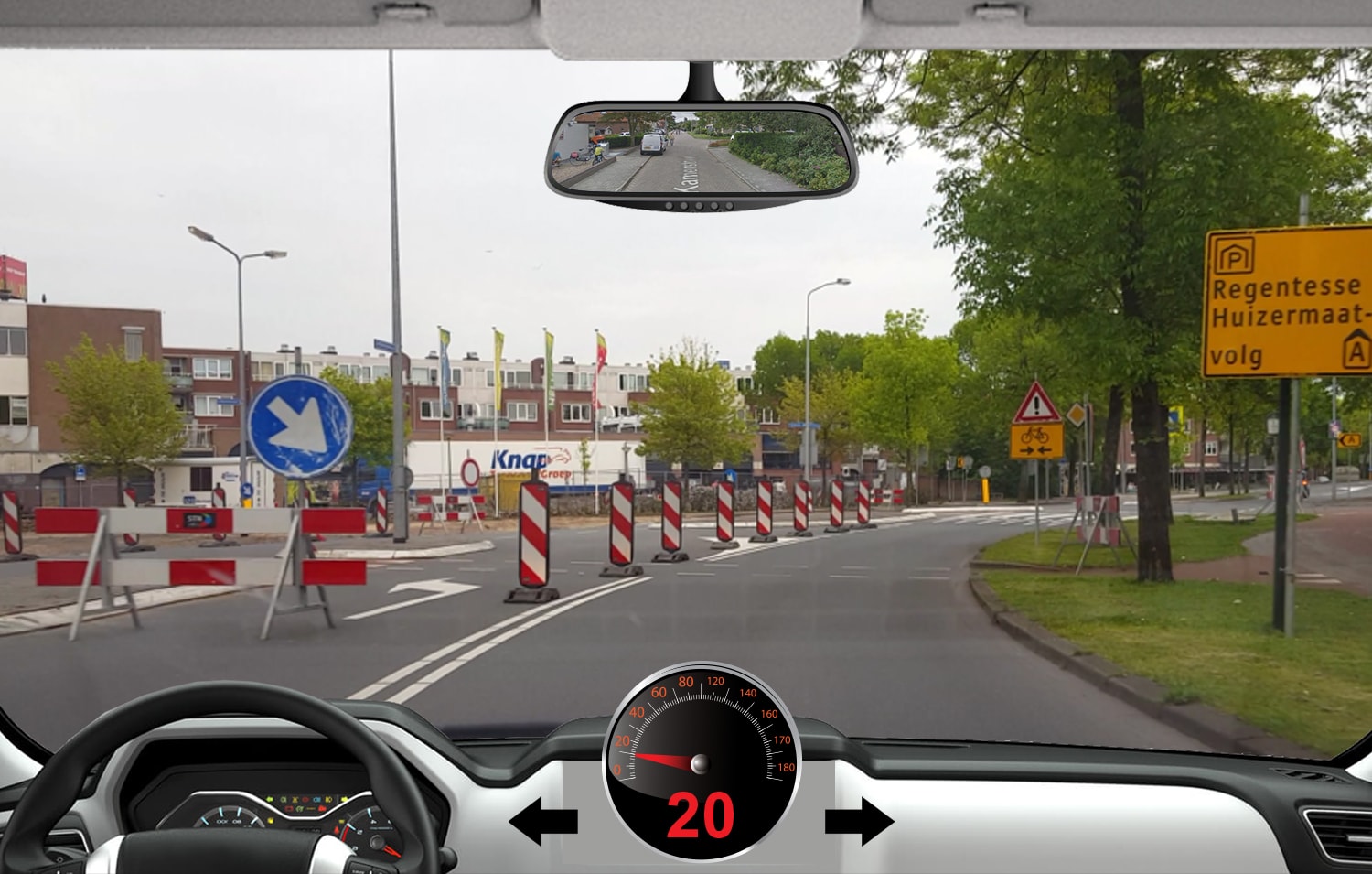
Proceed at your current speed. There is no danger ahead.
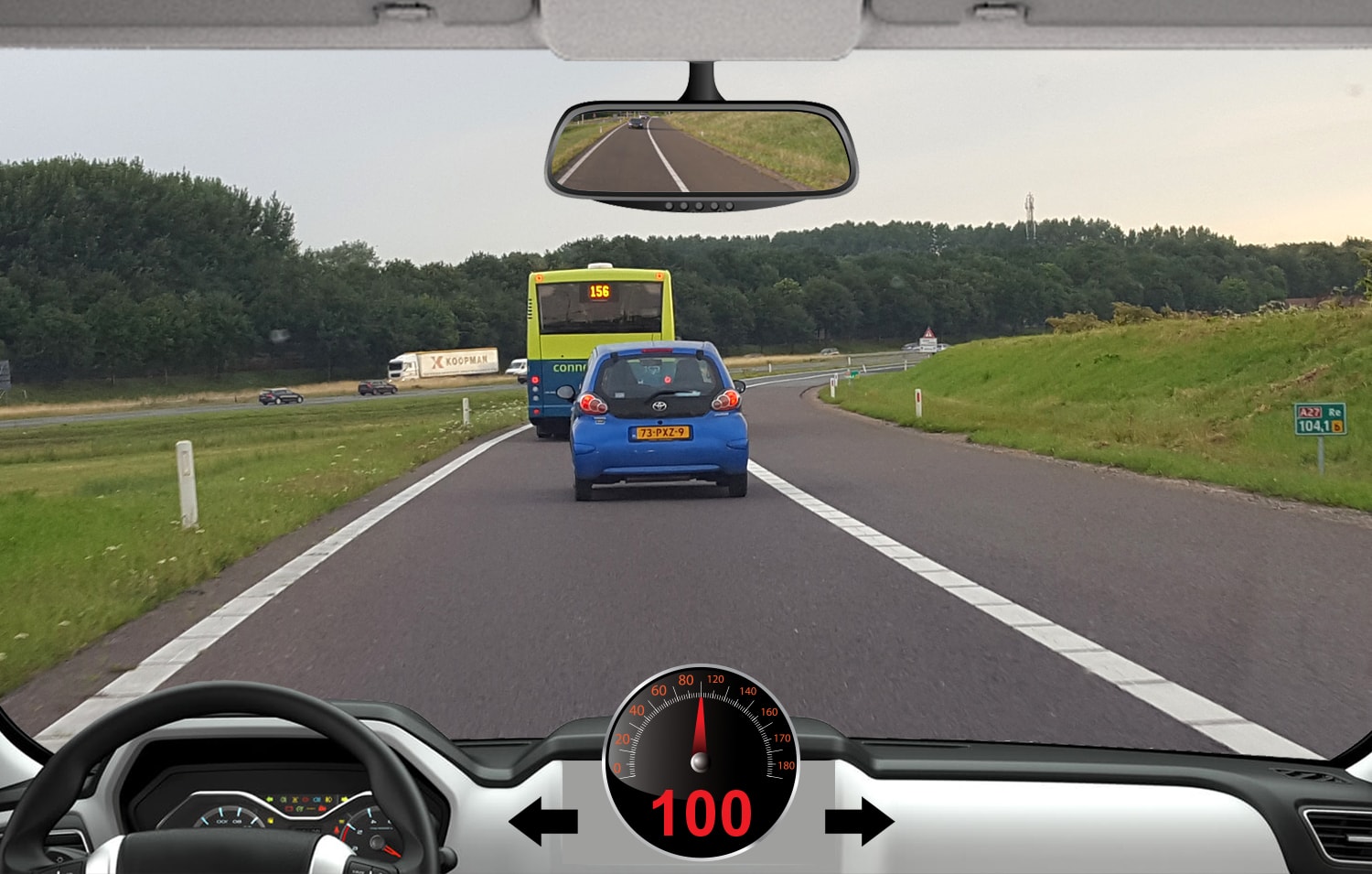
Release the accelerator to slow down to a speed of 80 km/h (the maximum speed of a public transportation bus is 80 km/h) and remain behind the bus until the entrance to the motorway.
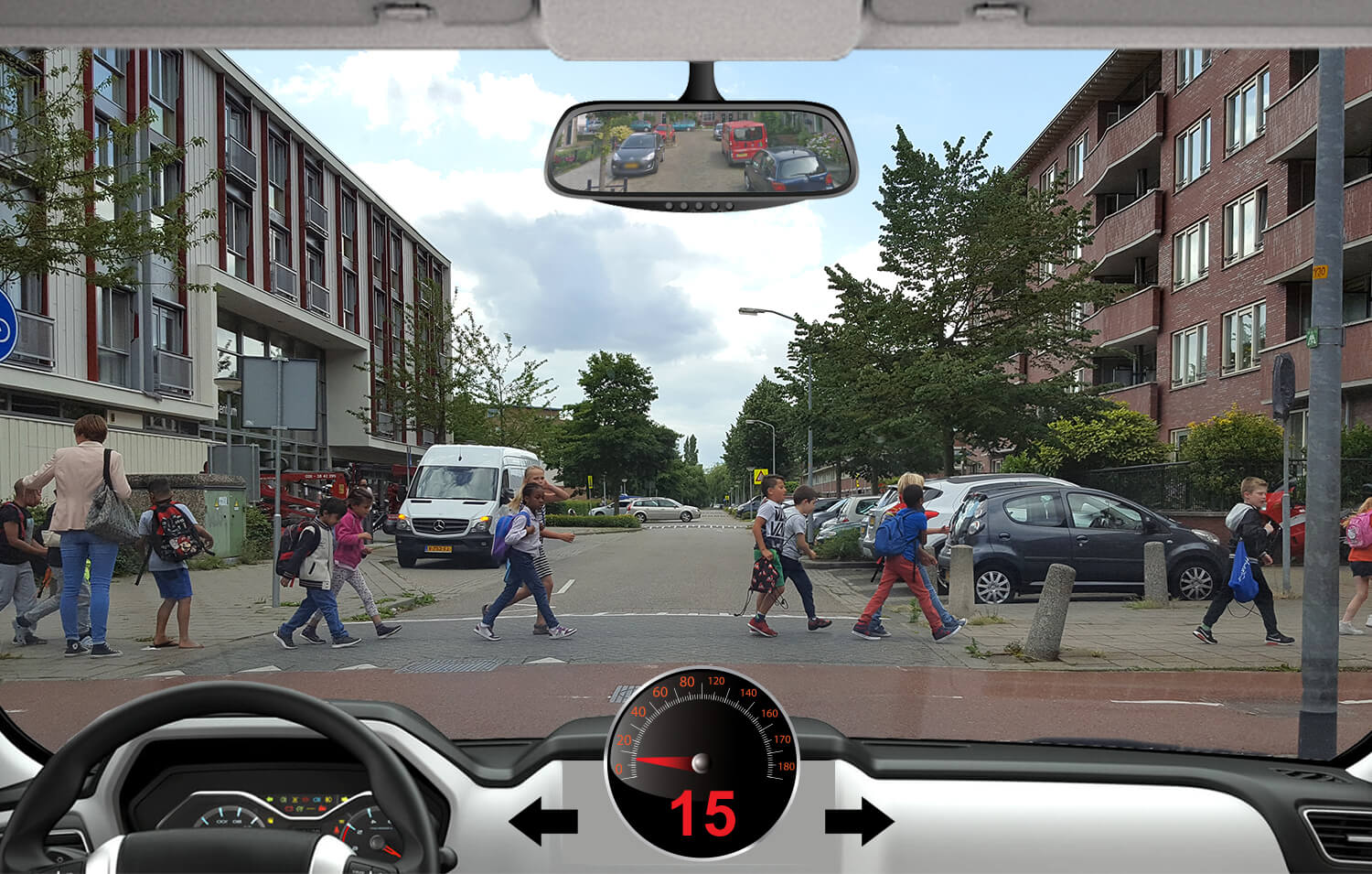
Brake to let the pedestrians cross the street. Pedestrians do not have priority in this case, but as children can be unpredictable, stop until they have crossed safely.

The road is slippery so you have to release the accelerator and swerve to the right so you can pass the car in front of you safely.
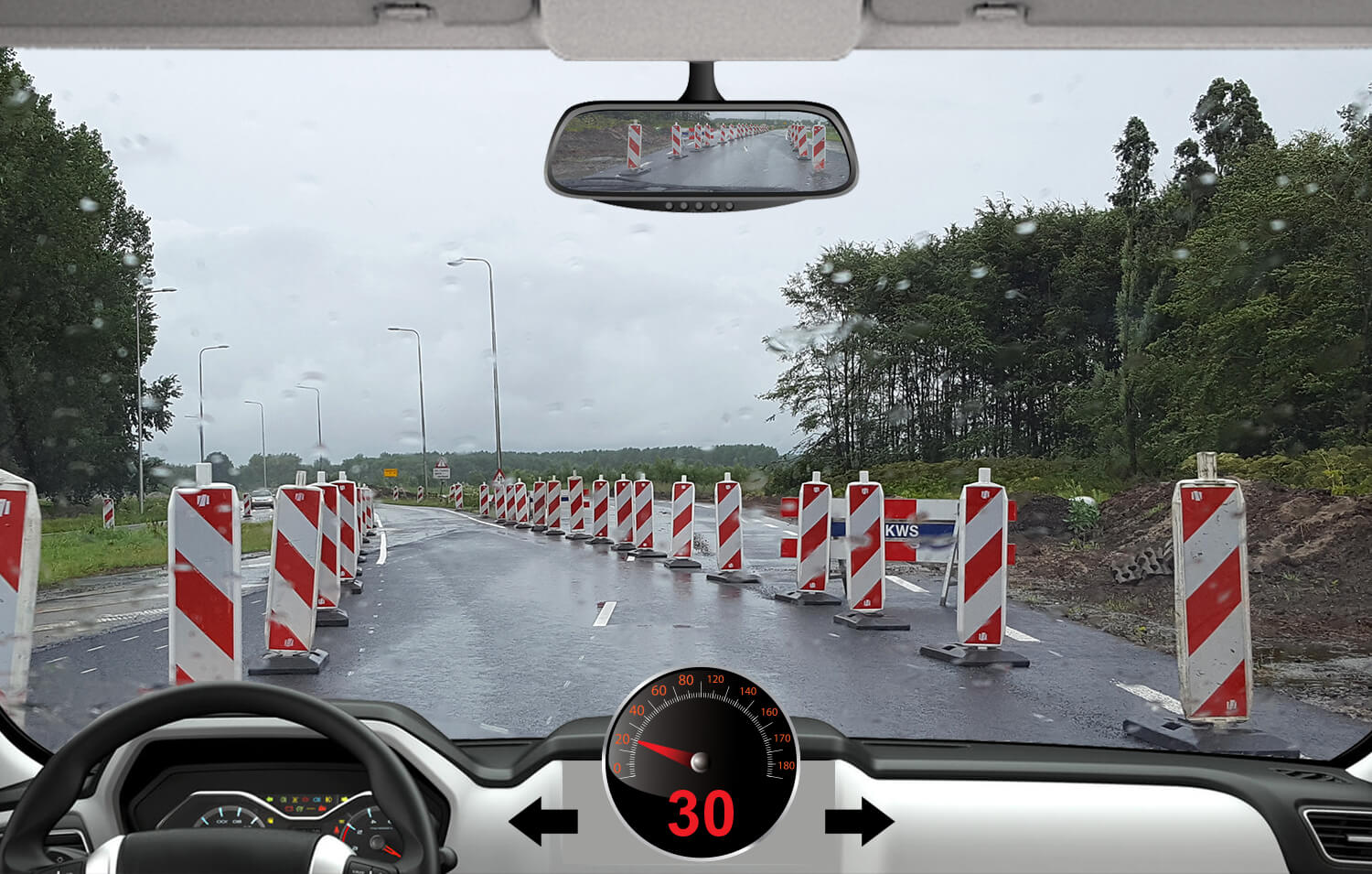
Continue at your current speed because there is no danger ahead.
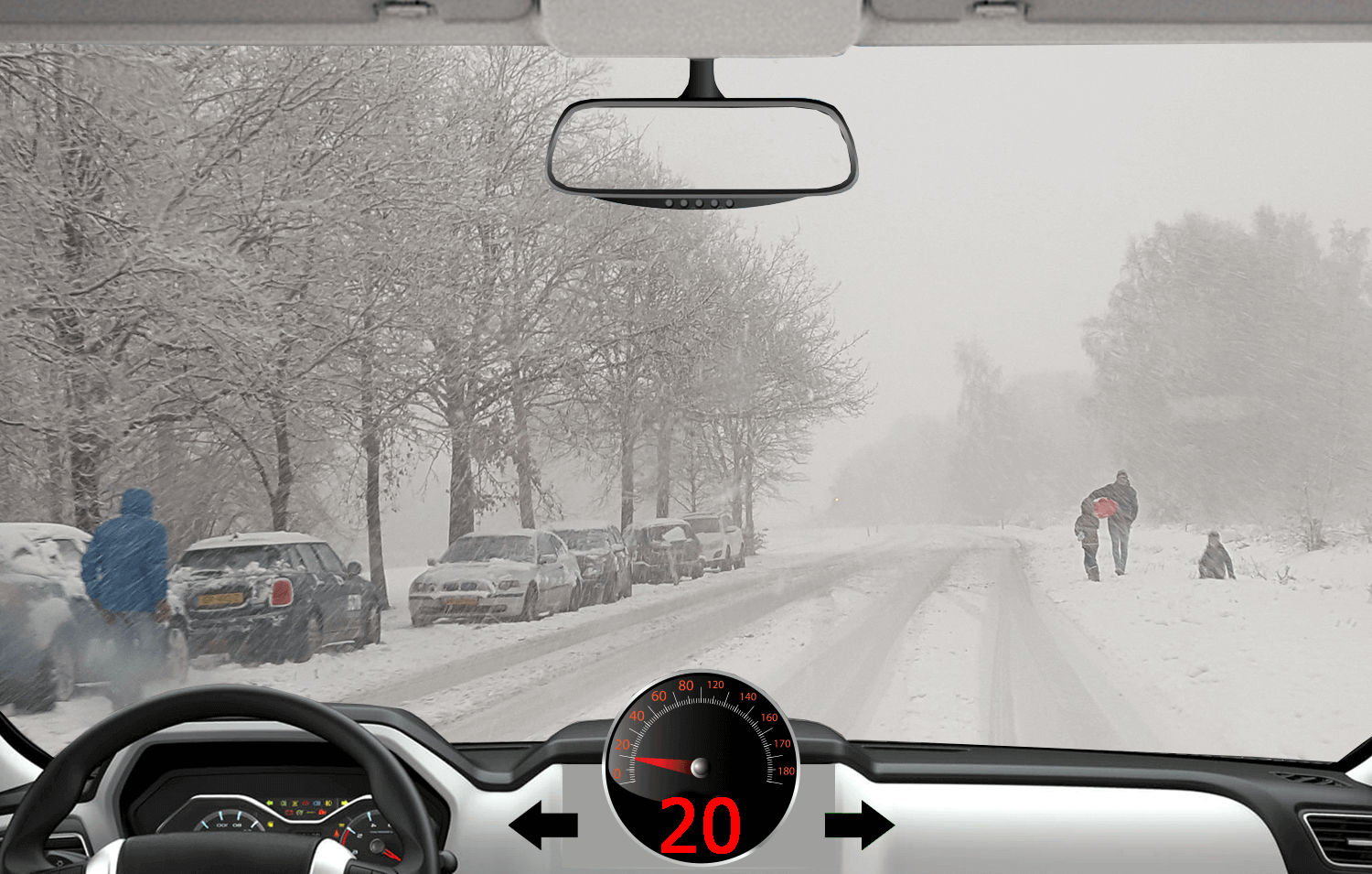
You need to reduce your speed and swerve slightly to the left so that when the kids cross the road unexpectedly, you can brake safely at a lower speed without sliding.
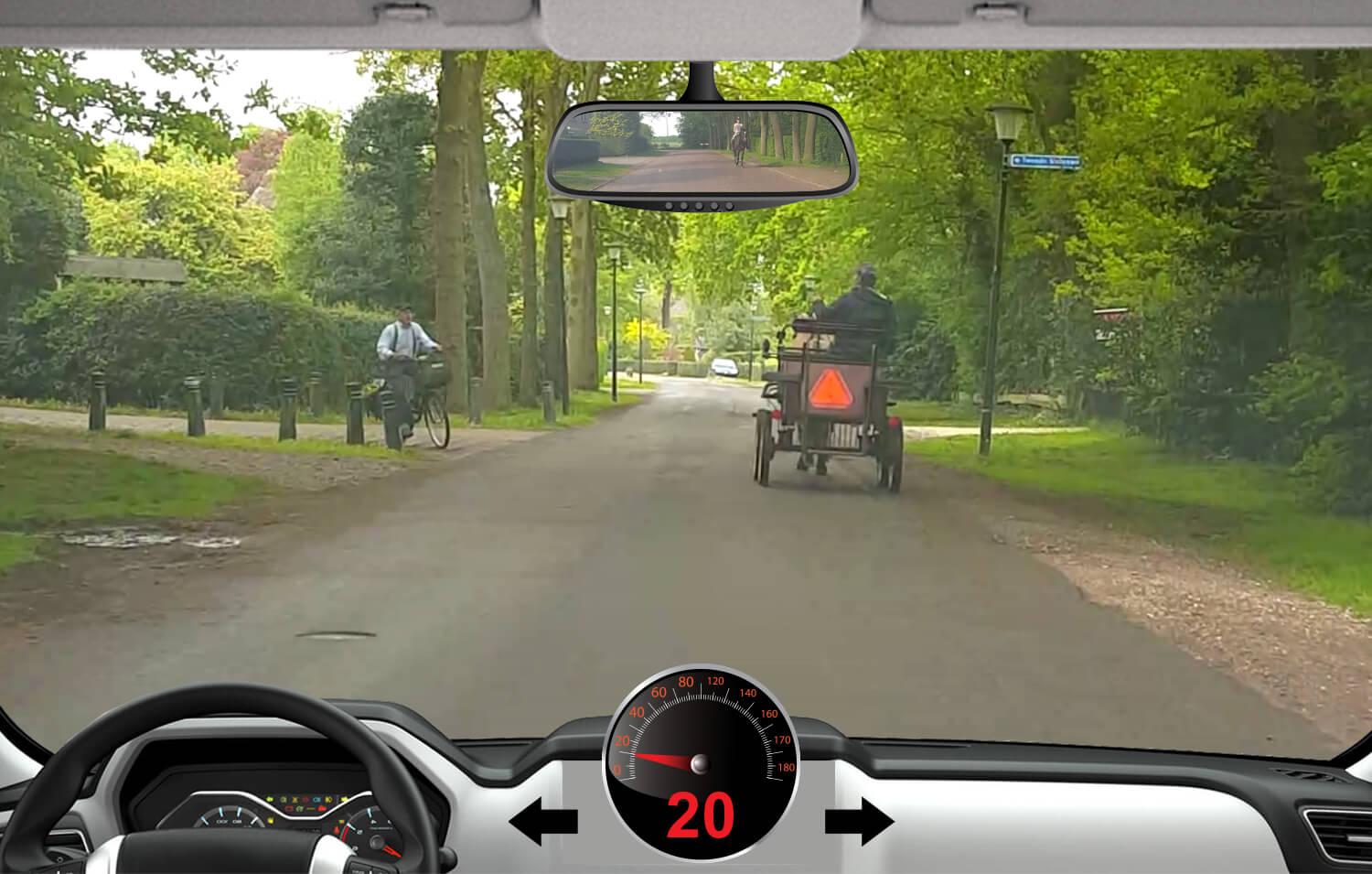
The horse-drawn vehicle in front of you is driving about 6 km/h, and you cannot overtake it because of the oncoming cyclist. You have to reduce your speed by lightly pressing the brake pedal because you're not going to make it in time by only releasing the accelerator.
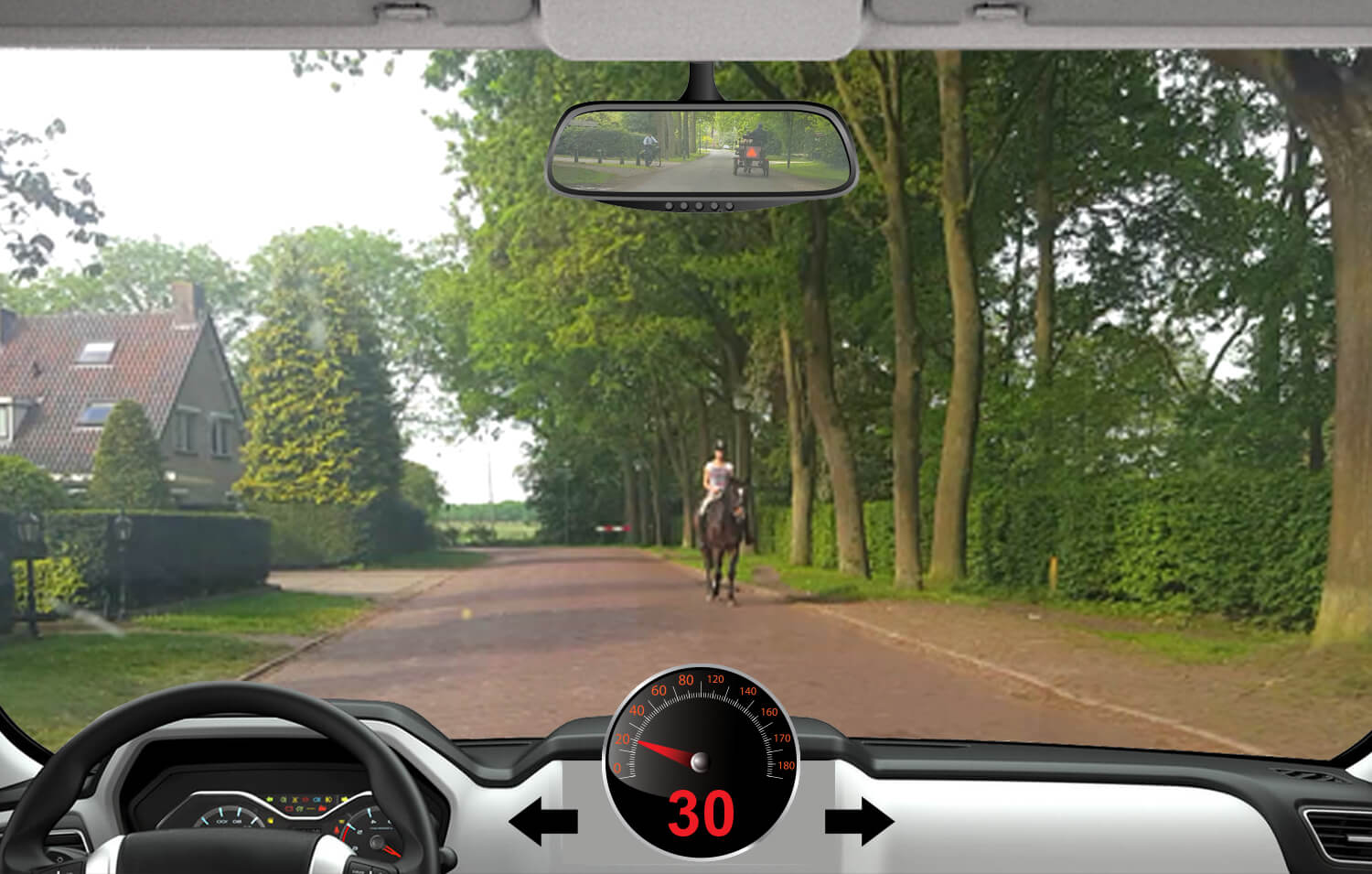
Nothing. If you want to overtake an animal, you must reduce your speed to 30 km/h or less. Never honk the horn, because the animal can startle and make unexpected moves.
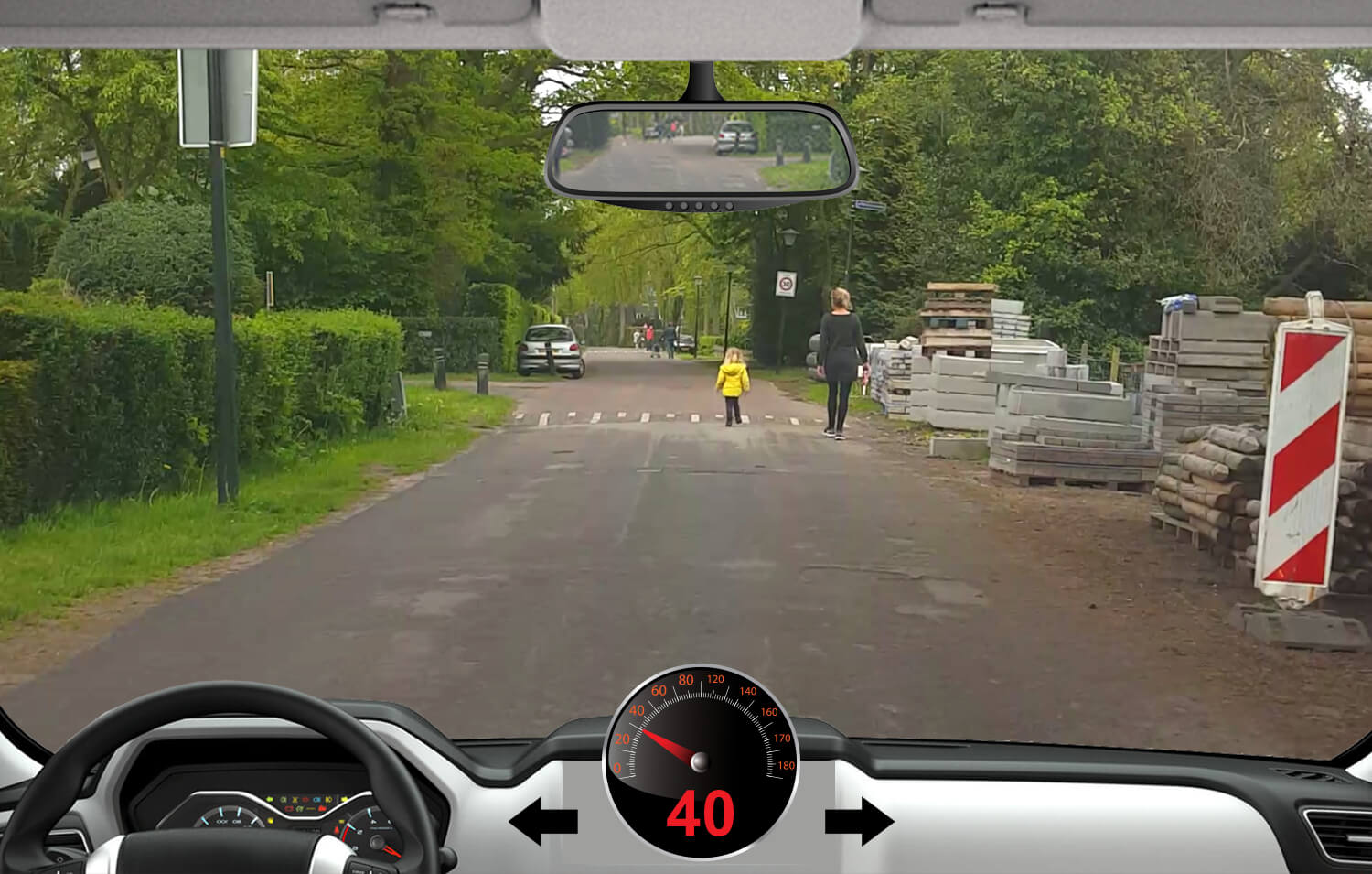
Brake. You are approaching a speed bump and a child is walking on the road. You must therefore immediately reduce your speed to around 10 km/h by braking so that you can overtake the child safely. (The distance between the child and you is too short for only releasing the accelerator). Moreover, you do not have a proper view of the road on your left.
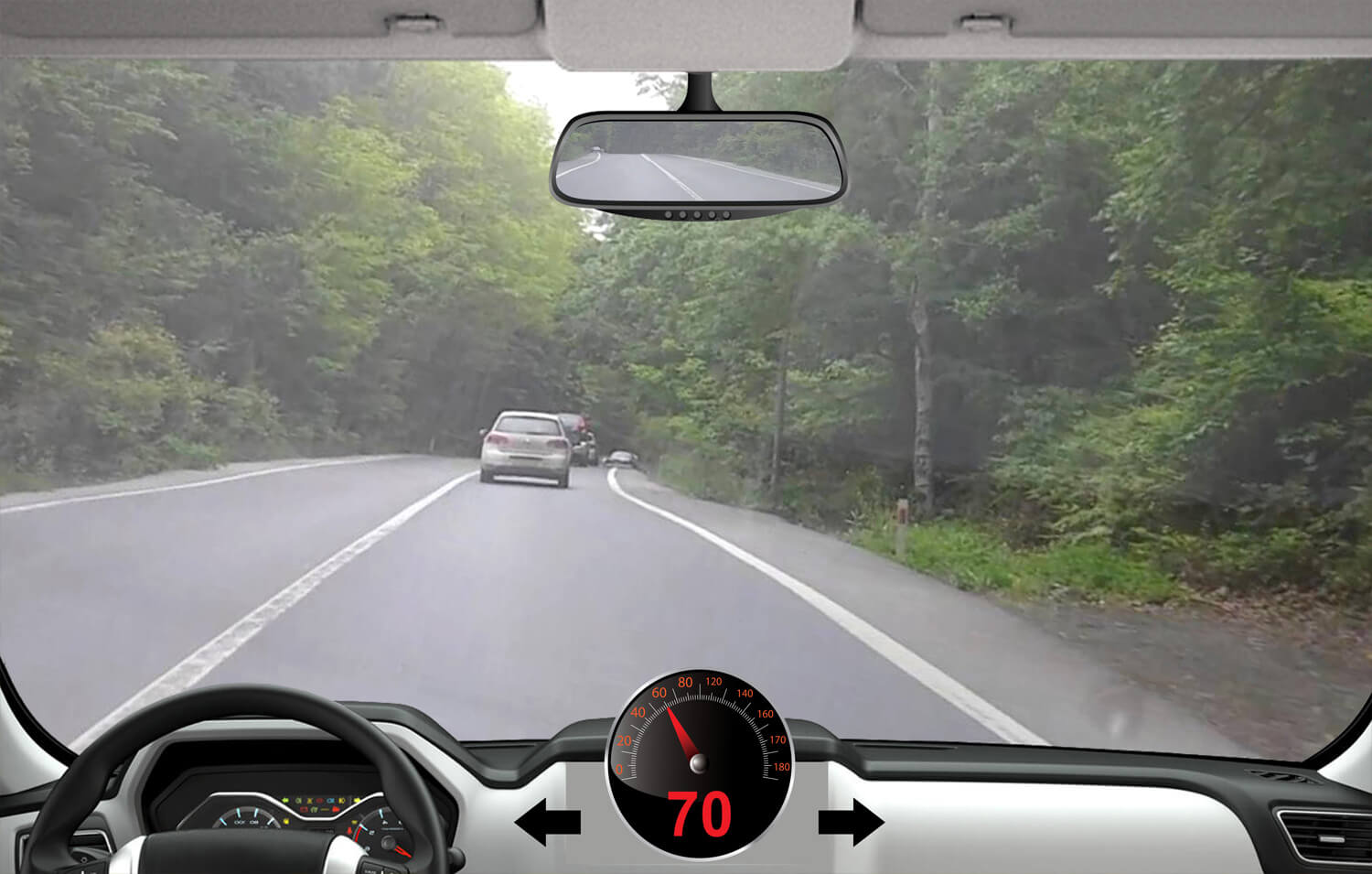
Nothing. You have enough following distance, but beware: the cars in front of you drive very close to each other, so make sure you can adjust your speed in time.
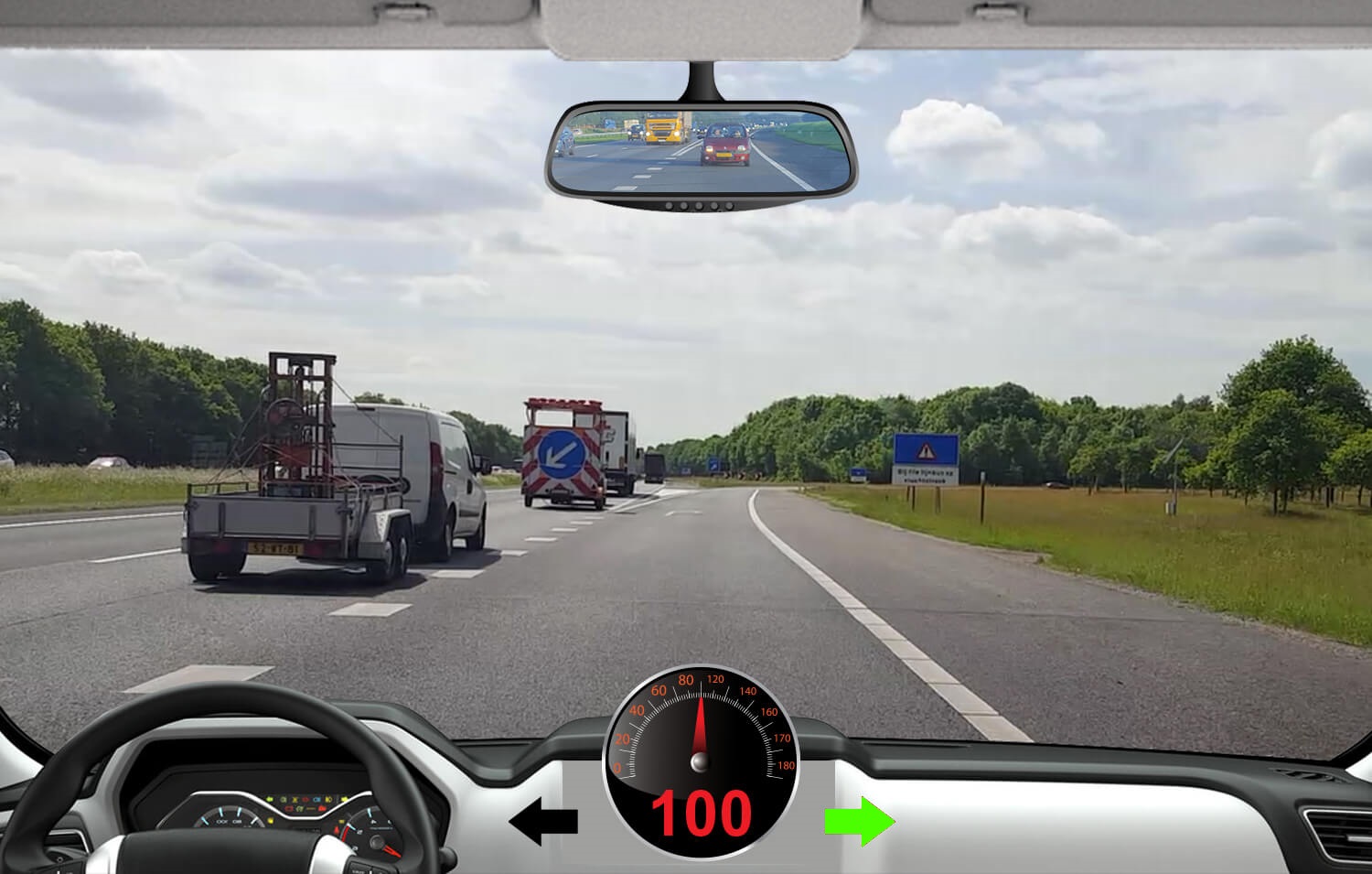
You are approaching a sharp curve at too high a speed and a car is driving behind you. You must reduce your speed by releasing the accelerator and not braking so the driver behind you will not startle. As soon as you get closer to the curve you need to brake softly to pass it safely.
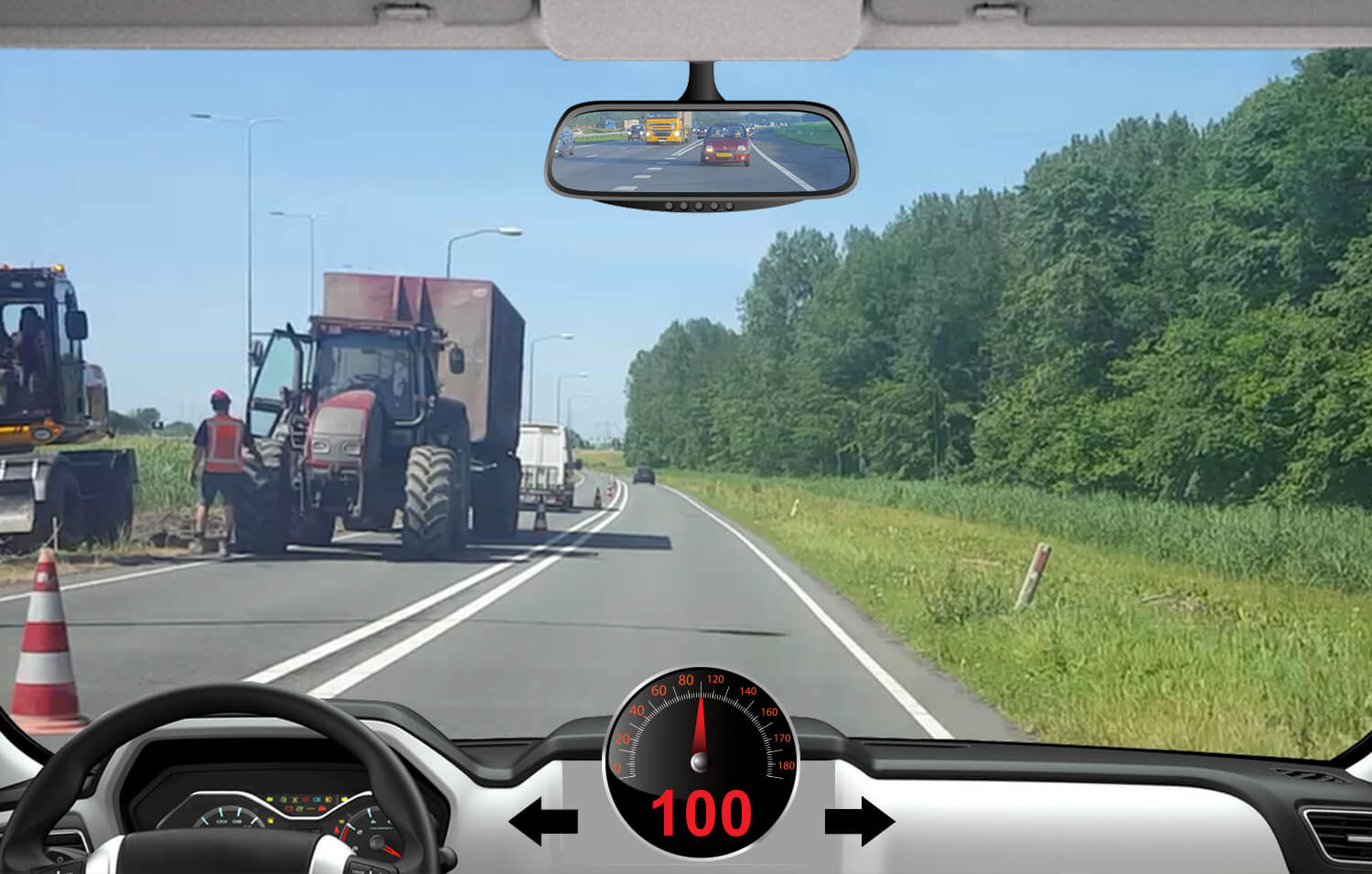
You drive too fast, because of road work and the narrow road, and someone can come from behind the tractor. So you have to brake immediately to pass safely.
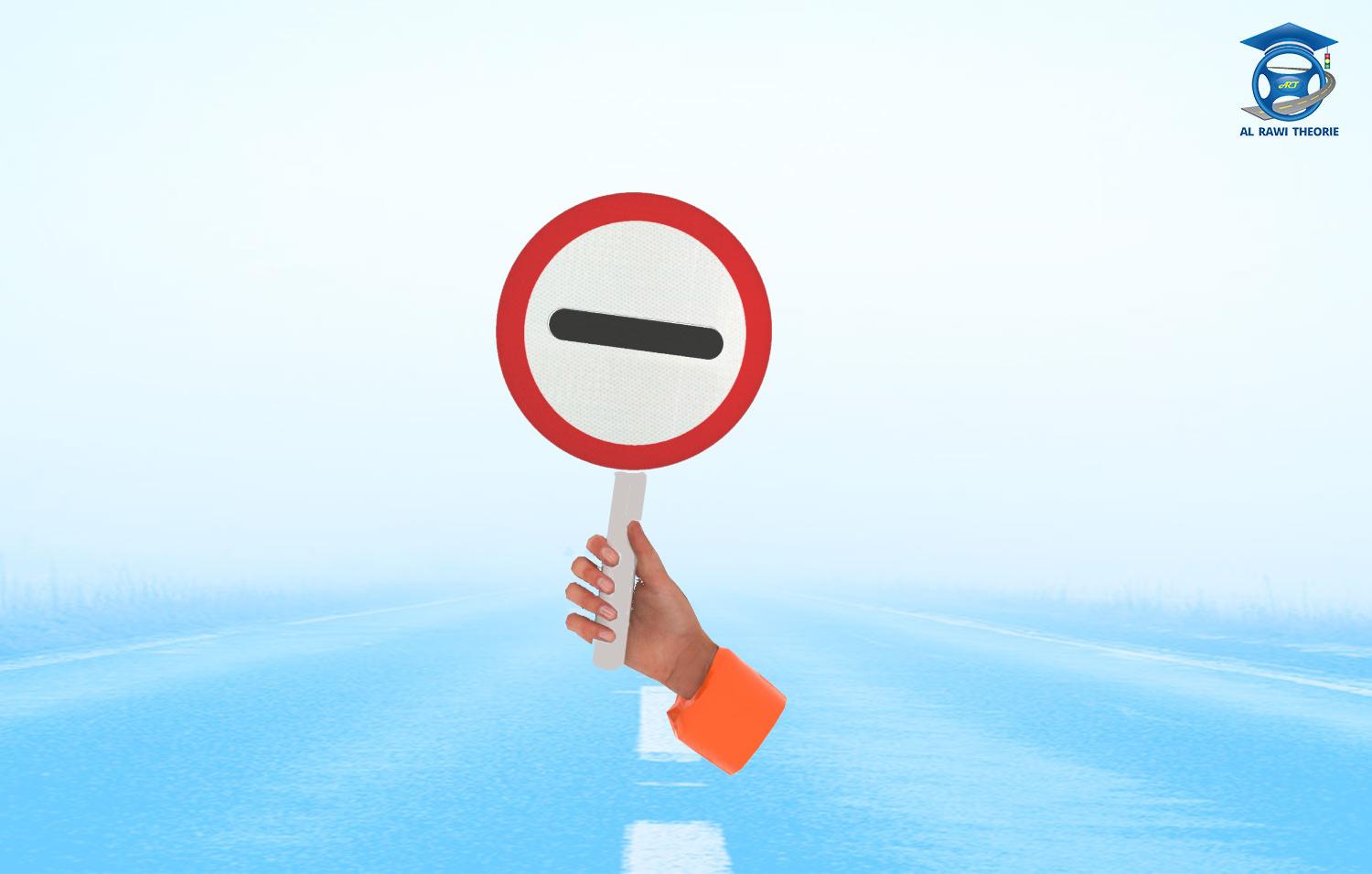
This sign means all drivers must stop. It is usually used near schools when pupils are crossing the road.
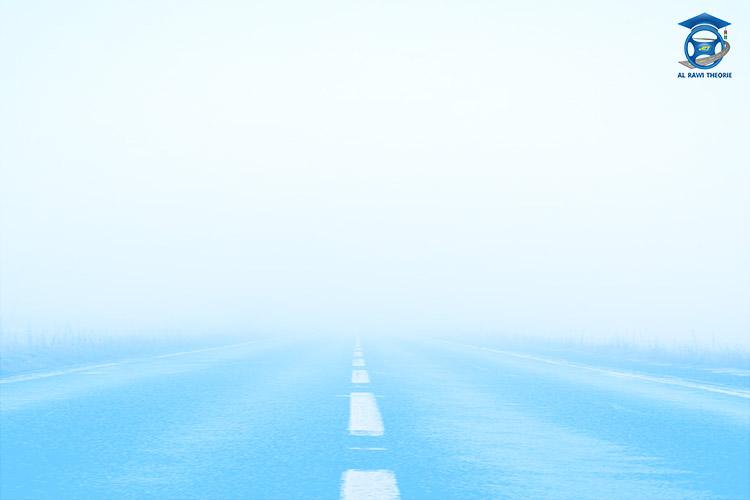
BSN (Burgerservicenummer) is the national number and it is written on the backside of the driving license. In some cases you can use your driving license as an official document to identify yourself.

You are allowed to stop in an emergency parking bay in case of an emergency, but you are not allowed to stop here to answer a call. Proceed to the nearest parking space.
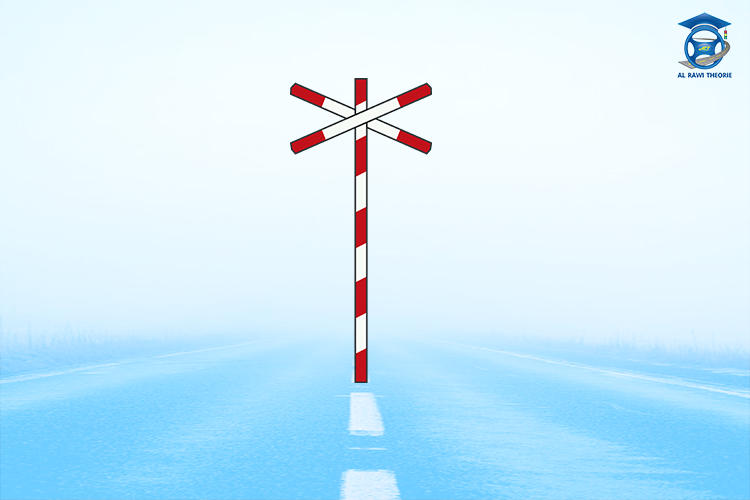
The single red and white cross indicates that there is one railway track at this crossing.
The van goes second because straight-ahead traffic must go before turning traffic on the same road.



The red car has priority because it is on the main road. The white car goes next, and finally, the pedestrian who is crossing from another street without pedestrian crossing (zebrapad).
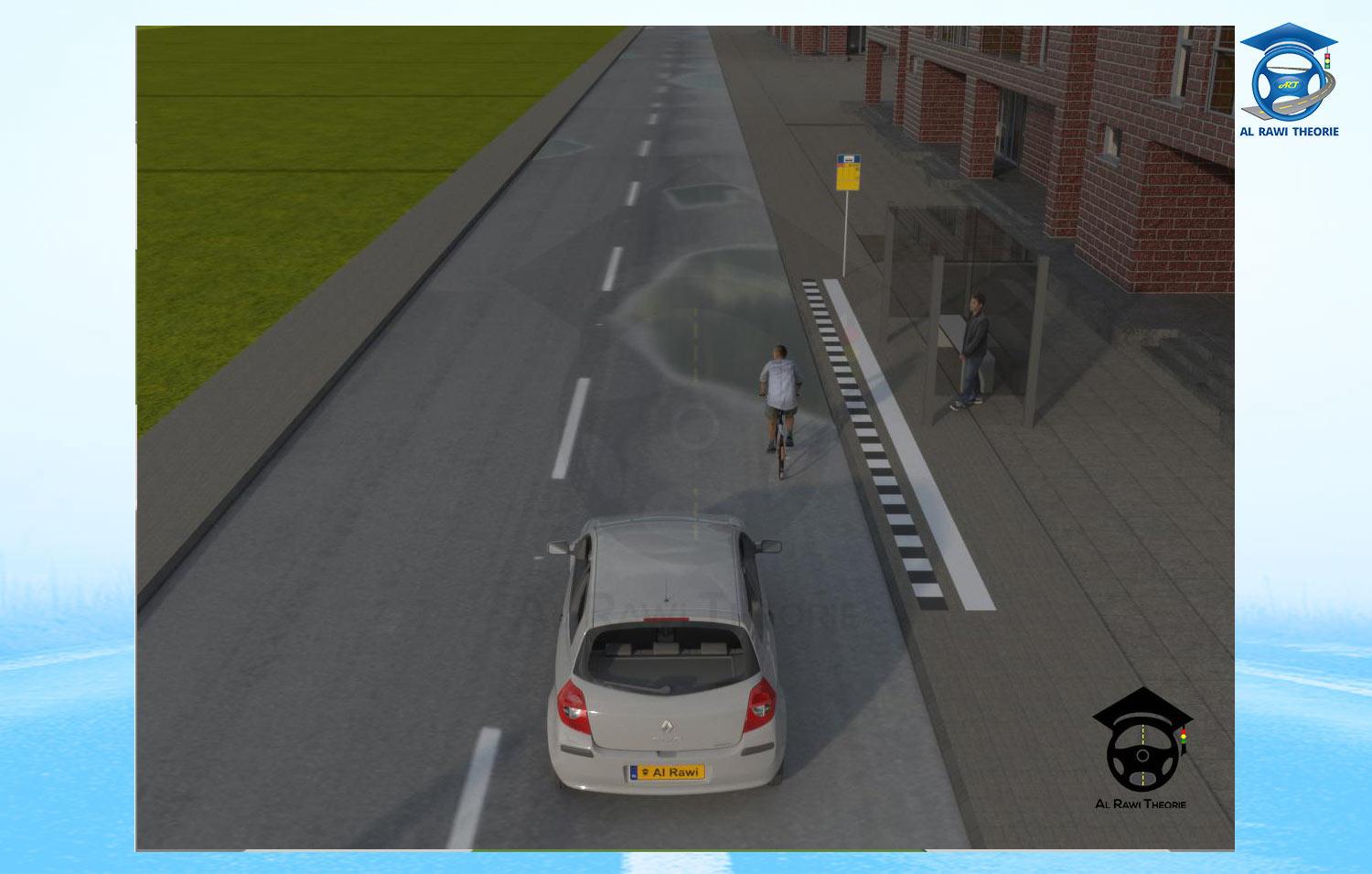
You are permitted to stop your car at a bus stop to let a passenger get in or out. You are not allowed to stop at a bus stop to load or unload goods.
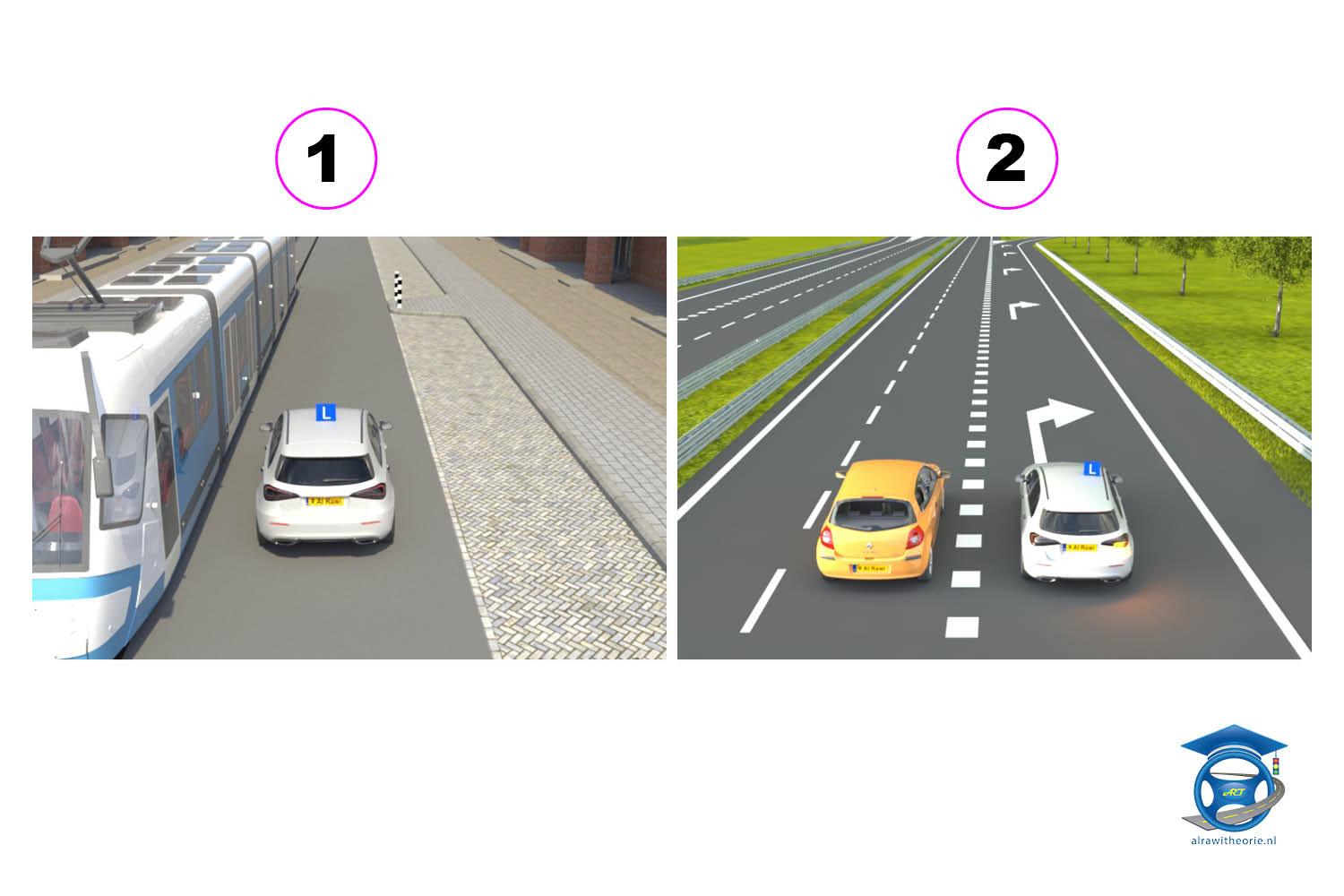
In both situations, all drivers are allowed to overtake a tram from the right. If the block marking is on your left side, you are also allowed to overtake from the right.



The white car goes first because it comes from the right of the bicycle (the green car must also give priority to the white car because it leaves an unpaved road), then the green car together with the pedestrian, and the cyclist at last (turning drivers must let straight ahead traffic go first)

A driving ban of six months may be applied to drivers found guilty of severe driving violations, for example, those found driving under the influence of alcohol. During this period you are not allowed to drive any vehicle with a motor (even with a driving instructor) . You are allowed to drive a bicycle.
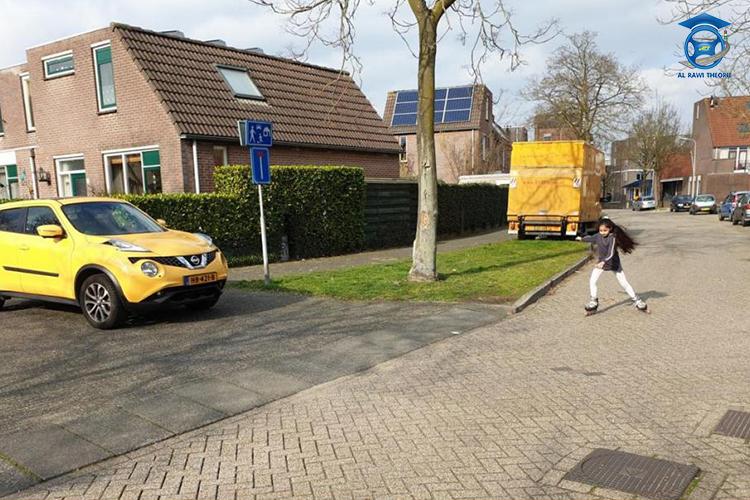
When leaving a pedestrian area or any other exit, you must give priority to all road users, including pedestrians.
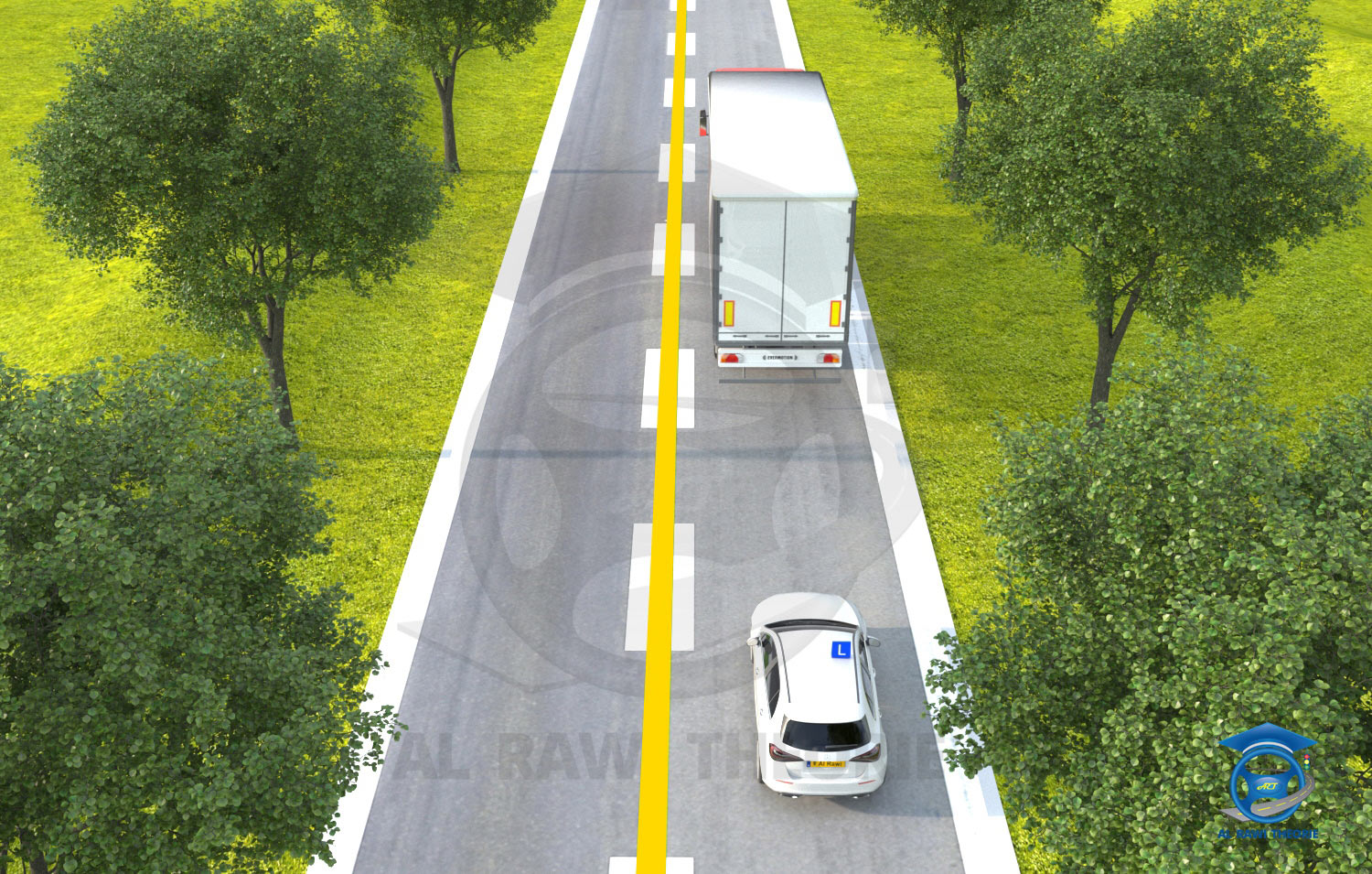
If you see a yellow line it means that there is road work. You must follow the rules for this line and ignore the rules for the white lines. In this case, you see a solid yellow line so you are not allowed to overtake.
You must stop immediately to prevent you from crashing the toy car.
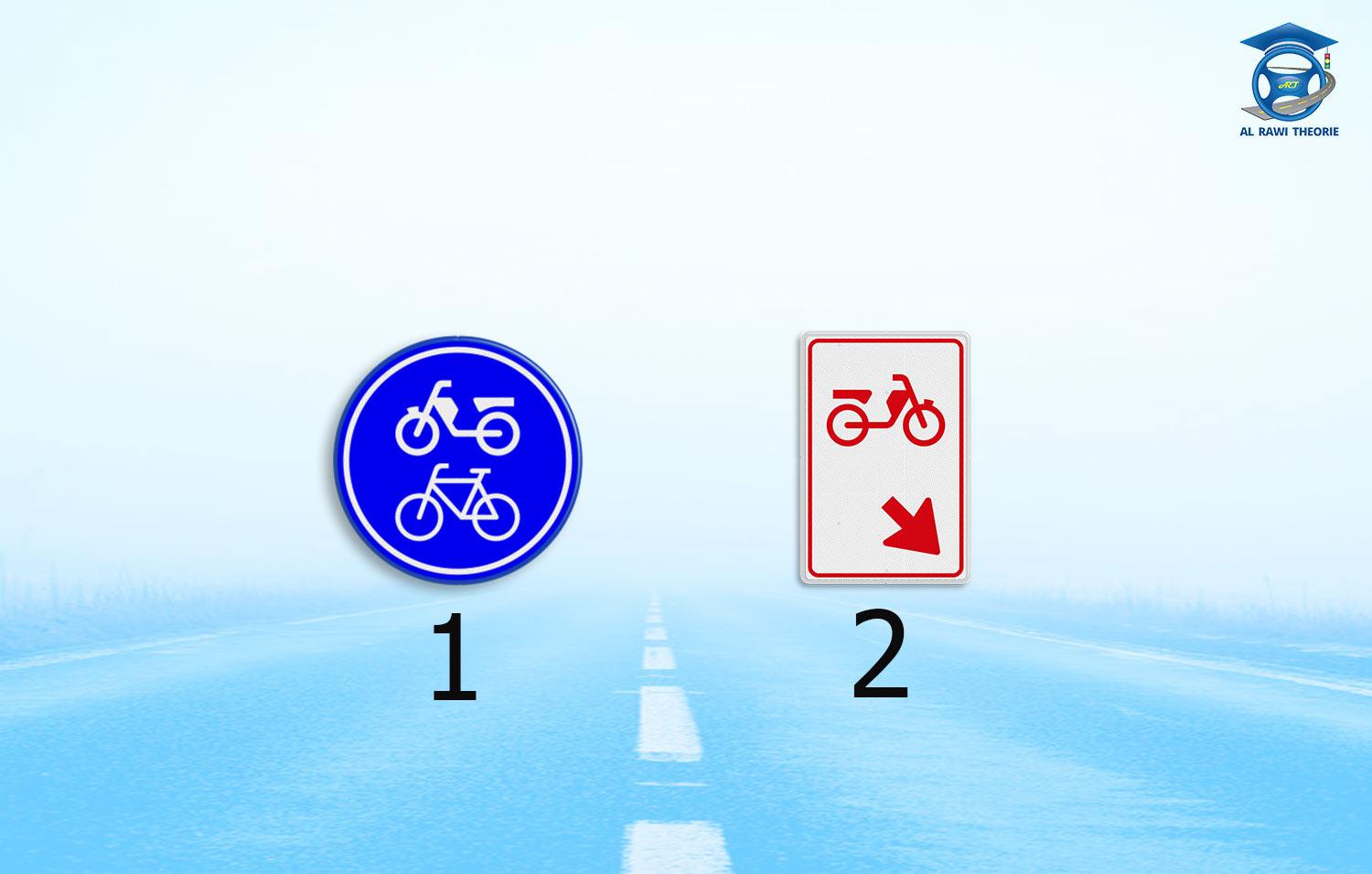
Both signs indicate that you will not expect a moped to share the carriageway with you. Sign 1 means that there is a cycle/moped path (the bicycle and the moped must drive there). Sign 2 means that the moped must leave the carriageway to the cycle/moped path.
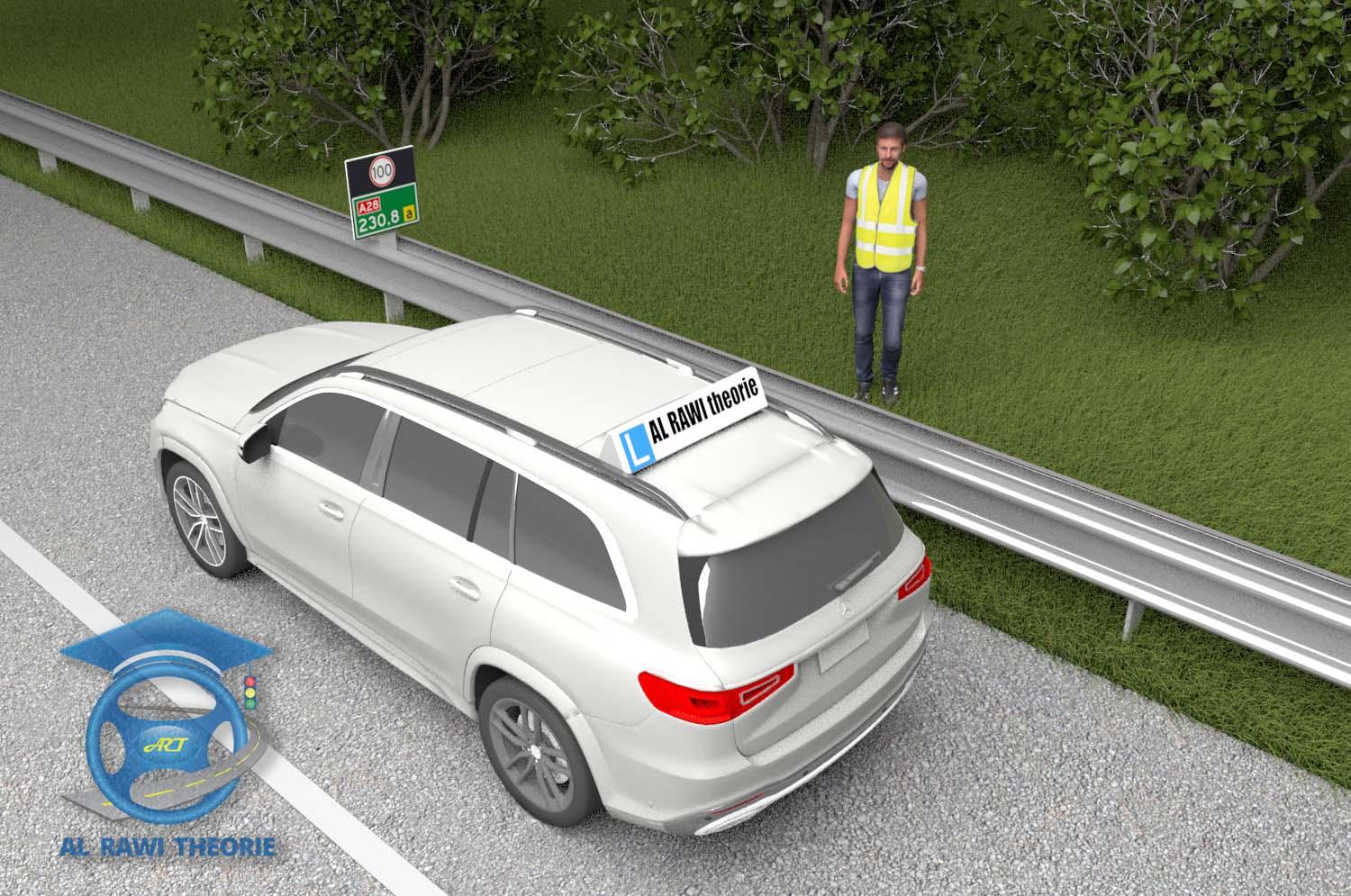
In case of car trouble, and there is a guard rail, you have to wait behind it until the emergency services come. Wearing a yellow vest is not mandatory but advisable (then you are clearly visible)..
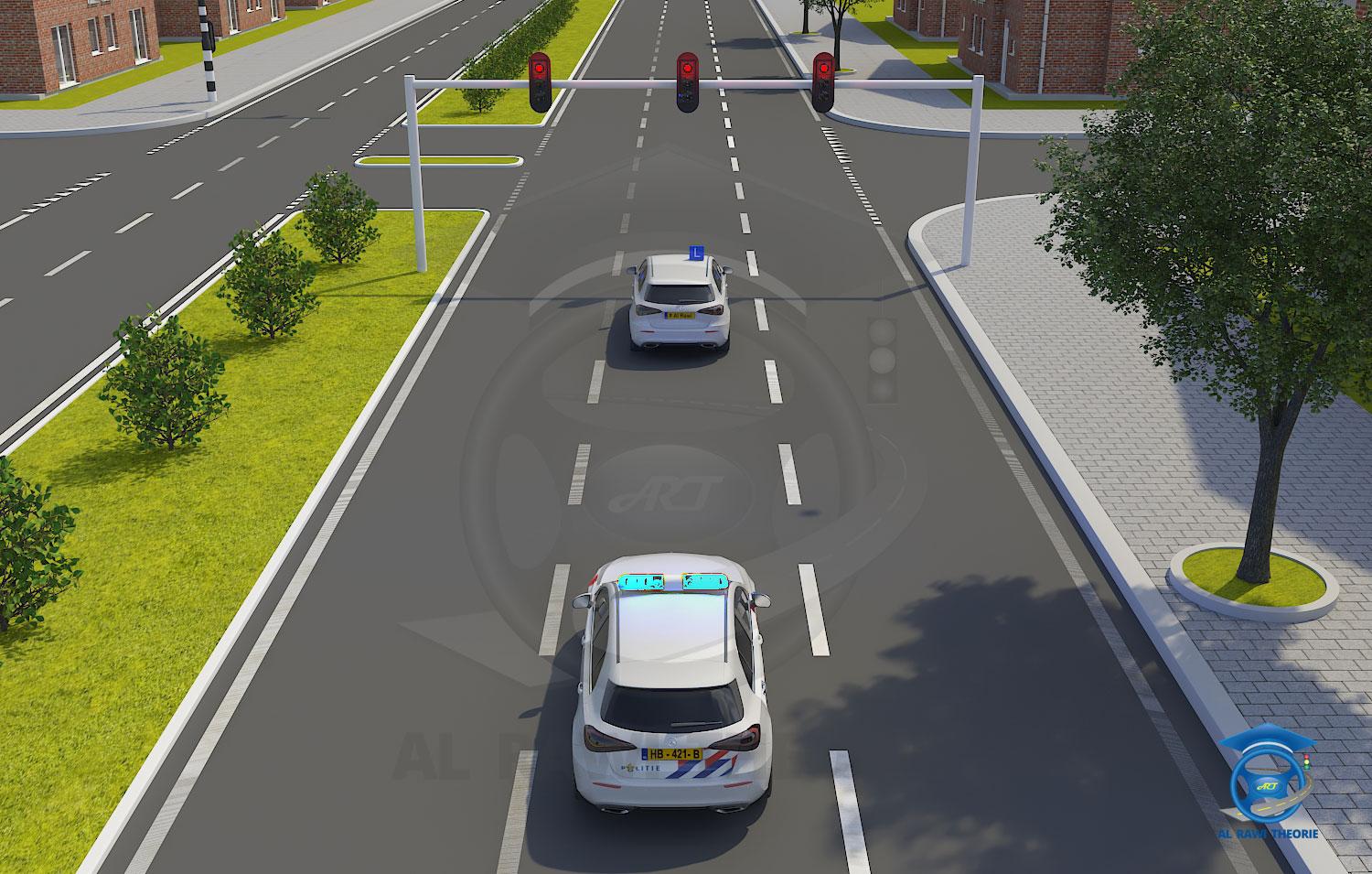
You can't drive through the red traffic light, and don't move right or left so you don't confuse the police or drivers of other priority vehicles.

Place him on an elevator seat so that the seat belt will be around his shoulder instead of his neck.

You are in the correct position. When you are driving on a two-way road you should pre-position at the right side. You can drive on the cycle lane or the suggestion cycle lane when it is free and separated by a broken line.



Sign A indicates that the road is not blocked, but you are not obliged to follow the direction of the arrow. Sign B indicates that the road is one way, that is why you are obliged to follow the direction of the arrow.
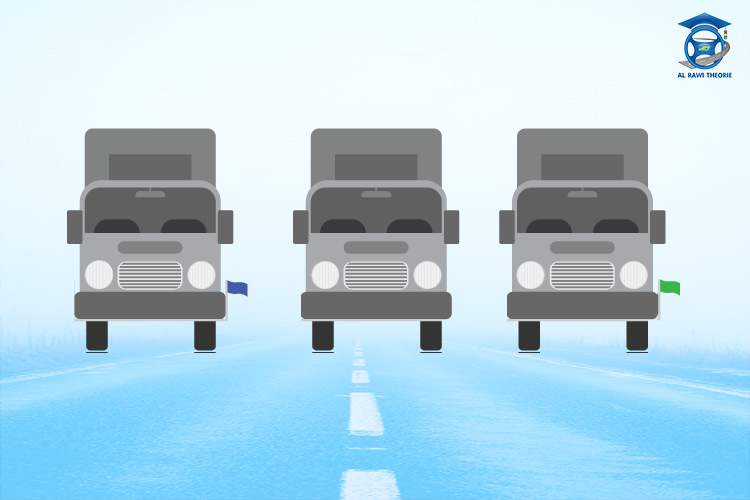


The first motor vehicle of a military convoy carries a blue flag on the left. Vehicles after the first one do not have any flags. Only the last vehicle of the convoy carries a green flag on the left.
You are not allowed to overtake close to an equal and a pedestrian crossing.
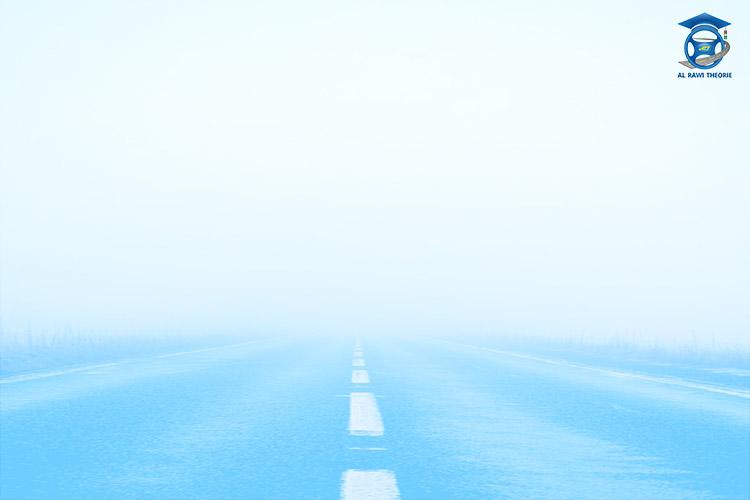
The most accidents happen on roads with a speed of 50, 60, or 80 km/h because they are narrow, often consist of one lane, and are used by all types of vehicles with a large speed difference, such as bicycles and cars, for example.
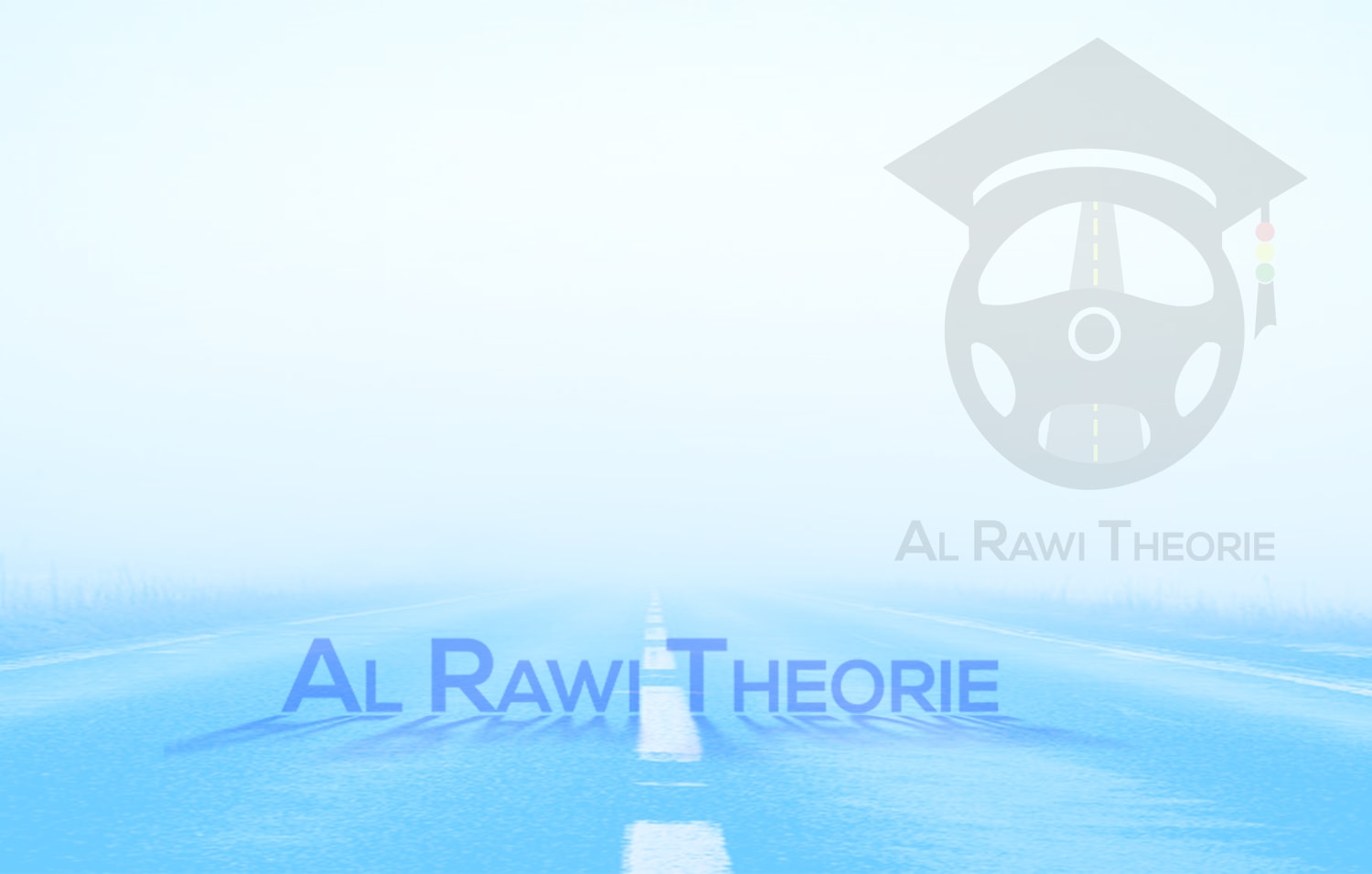
In traffic jam you are allowed to overtake from the right. You are also allowed to overtake from the right in a roundabout with cubed markings on your left; when overtaking a tram; and if you wish to overtake someone turning left.
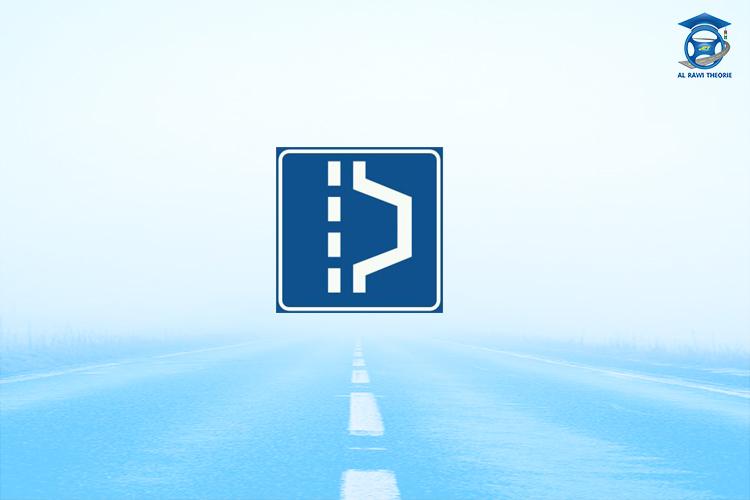
This sign refers to an emergency parking bay and you cannot stop in it unless emergency situation.
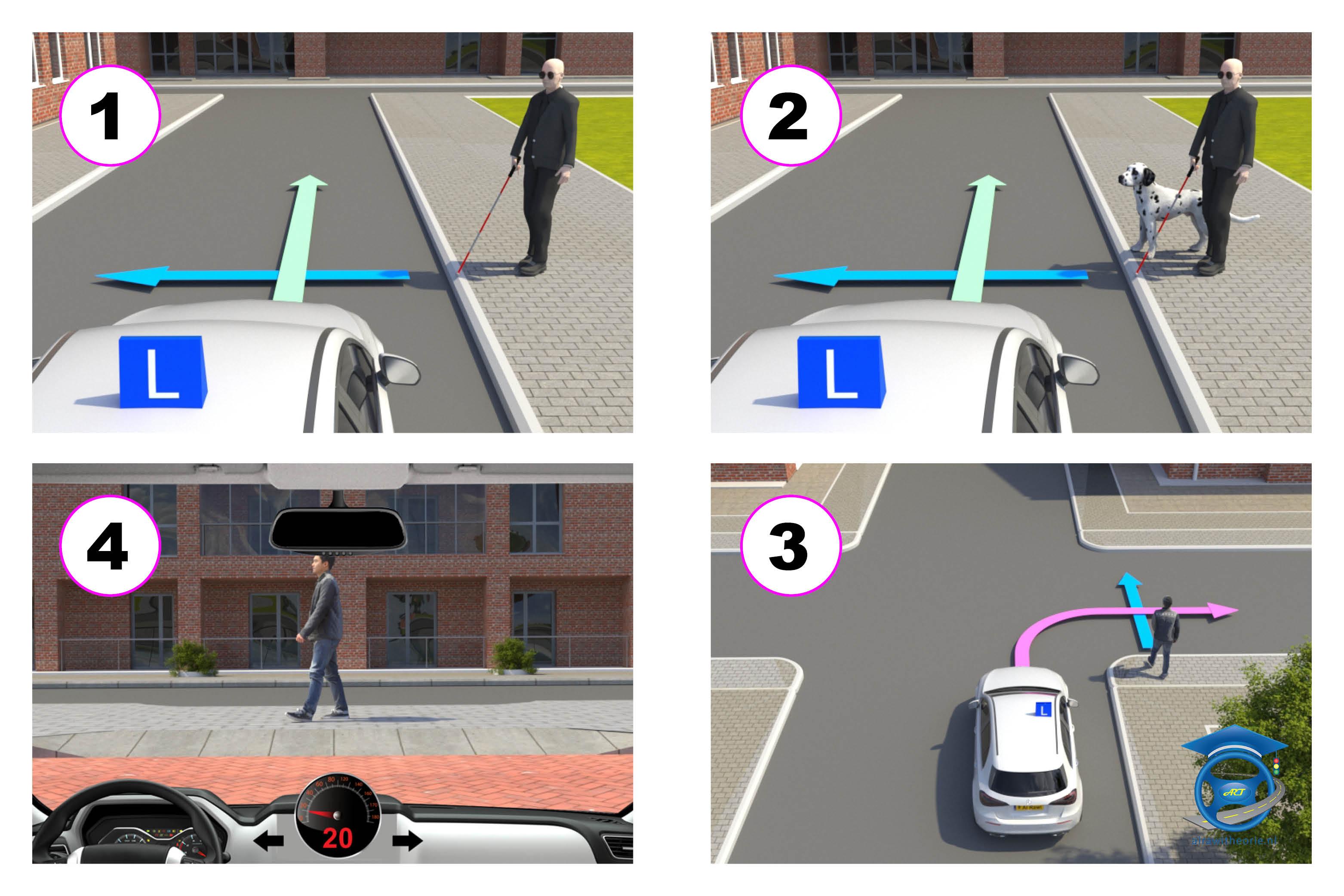
In situation 3, you must stop to let the pedestrian go first because the traffic that wants to continue straight ahead should go before turning traffic on the same road. Situations 1 and 2 involve a blind man who wants to cross the road. (drivers must let blind people always go first). In situation 4 you must give priority to all road users when you leave an exit.
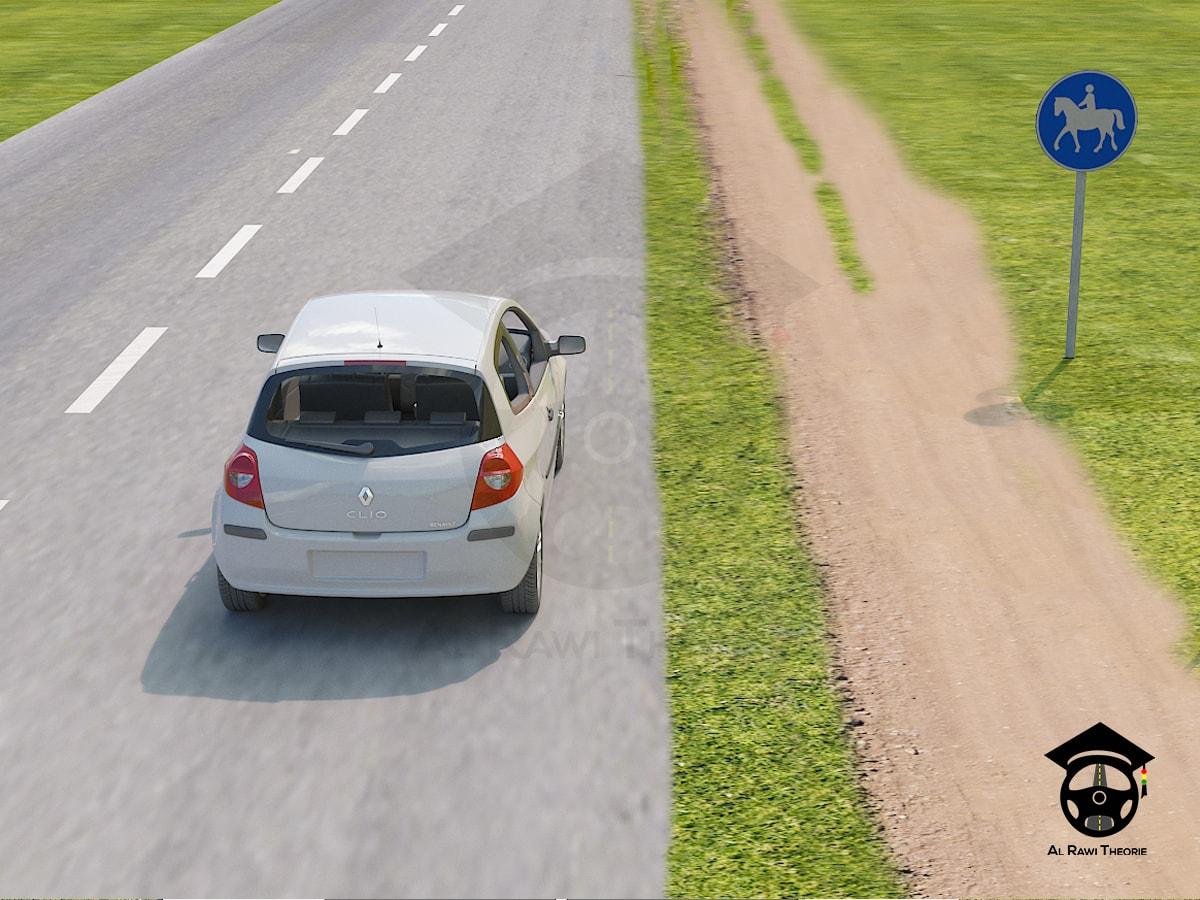
The gravel road on the right is a dedicated equestrian path, as signified by the blue circle sign. Horse riders will not share the paved road with drivers.
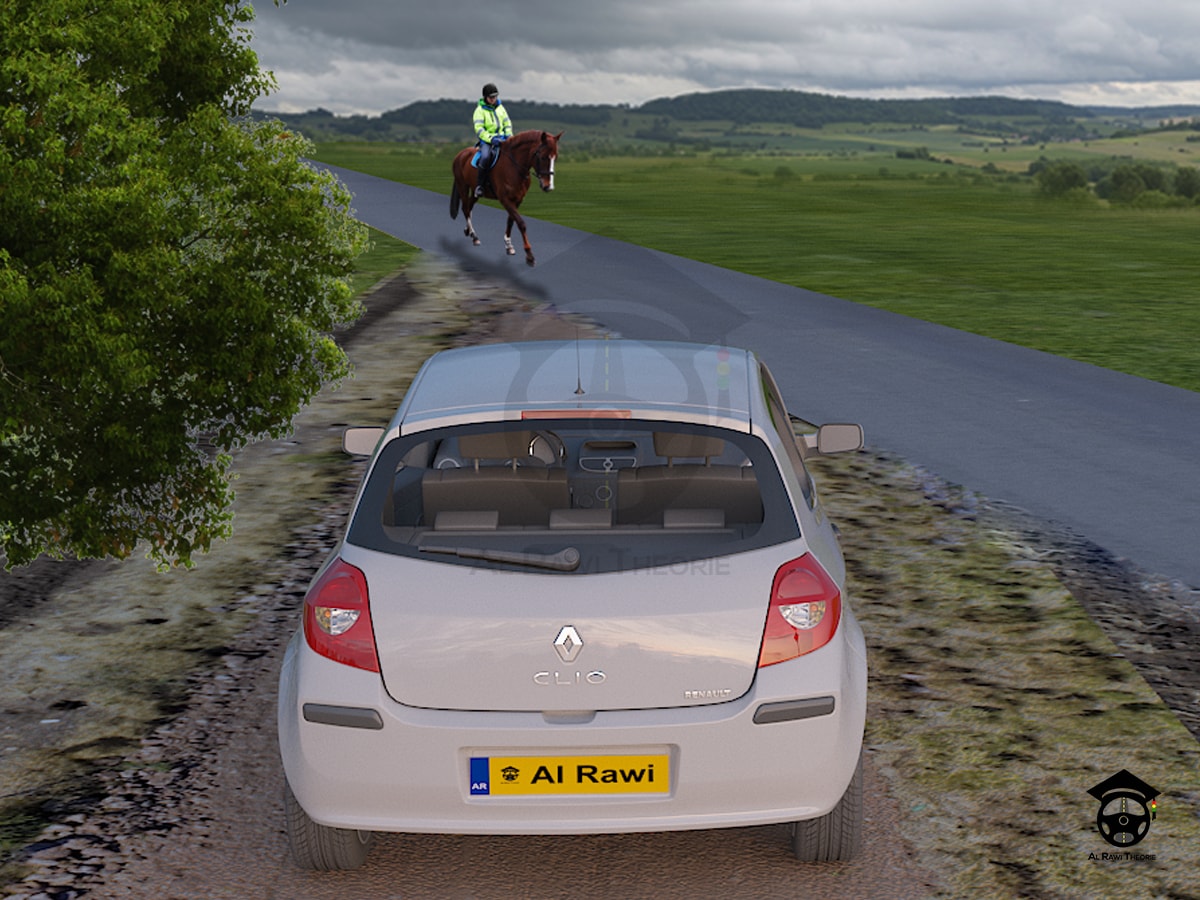
The vehicle or road user exiting from a gravel road must yield priority to road users currently on the roadway, coming from either direction. You do not need to give way to pedestrians.

You are driving outside of a built up area, therefore the maximum speed is 80km/h.
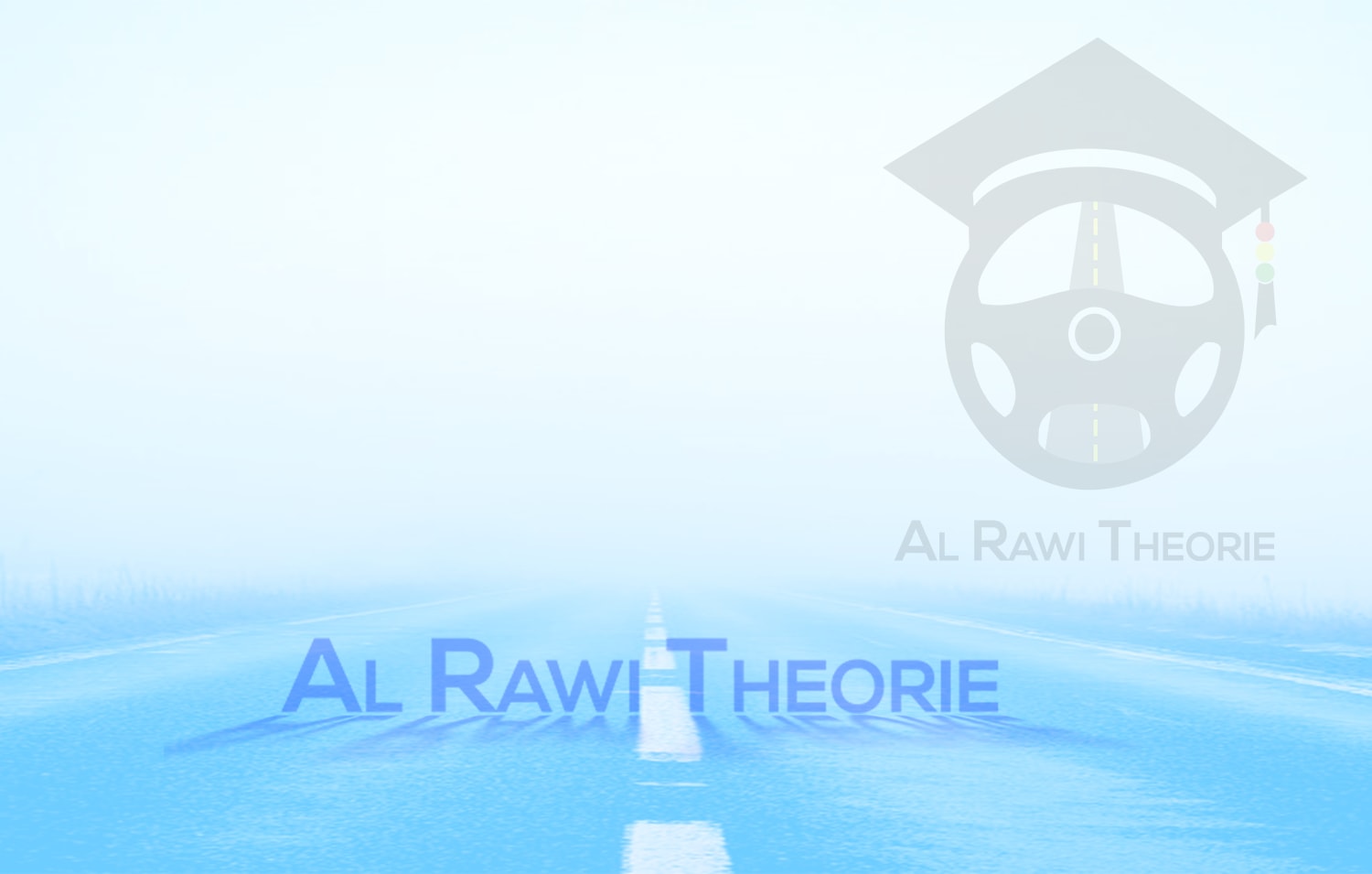
The braking distance is the sum of the drivers reaction distance and the car''s braking distance.
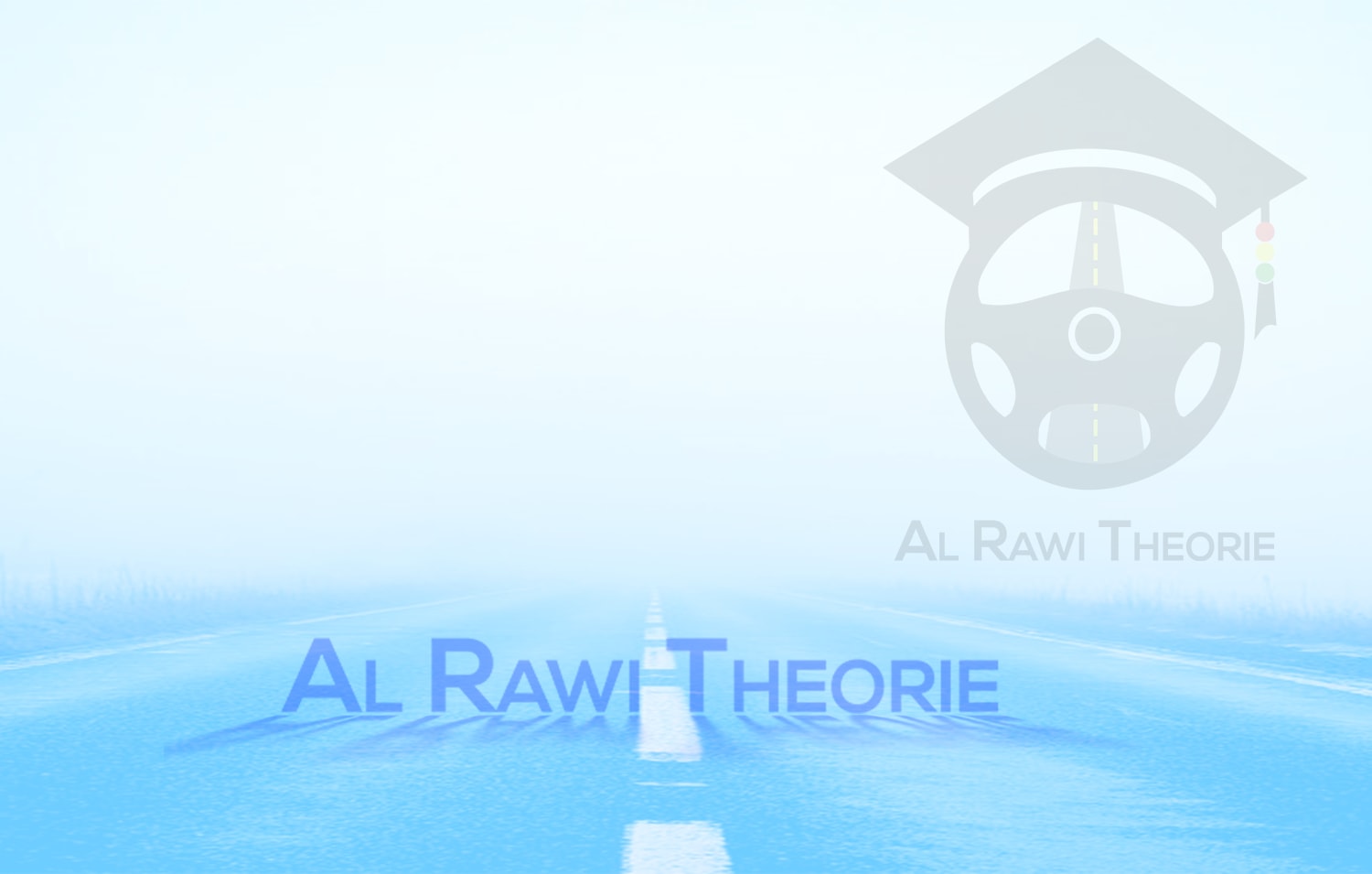
Human error accounts for 92% of accidents.
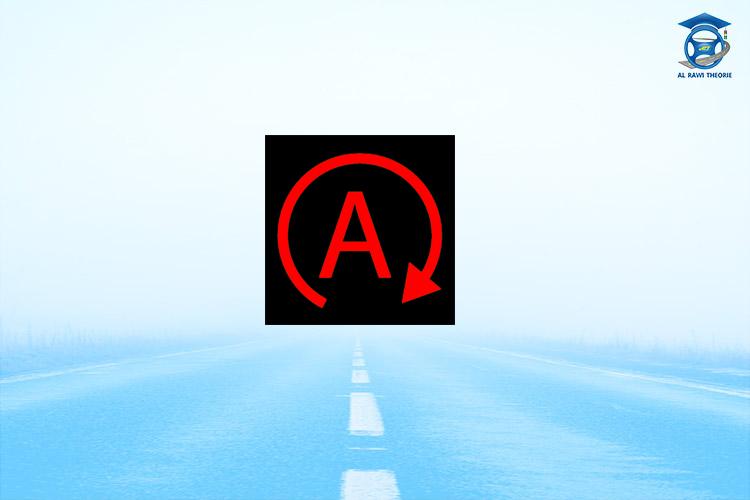
stop-start system automatically shuts down and restarts the engine to reduce the amount of time the engine spends idling, thereby reducing fuel consumption and emissions.
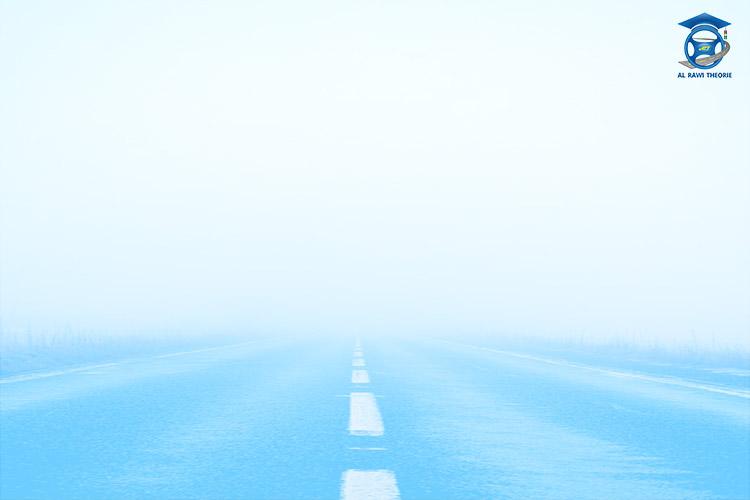
You are not allowed to park on the carriageway of a main road, regardless of its location, whether inside or outside the built-up area.
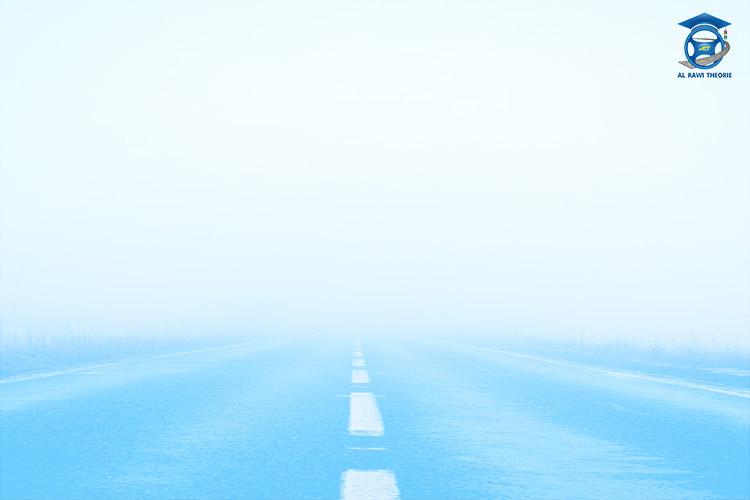
When you use a higher gear, the number of RPM''s decreases and the engine uses less fuel, therefore emitting less CO2.
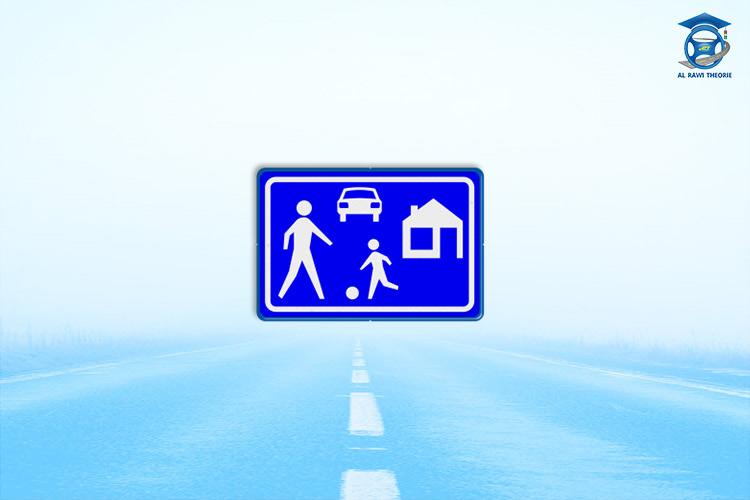
Residential zones (ERF in Dutch) have a maximum speed of 15km/h. You should expect to see children in this area.
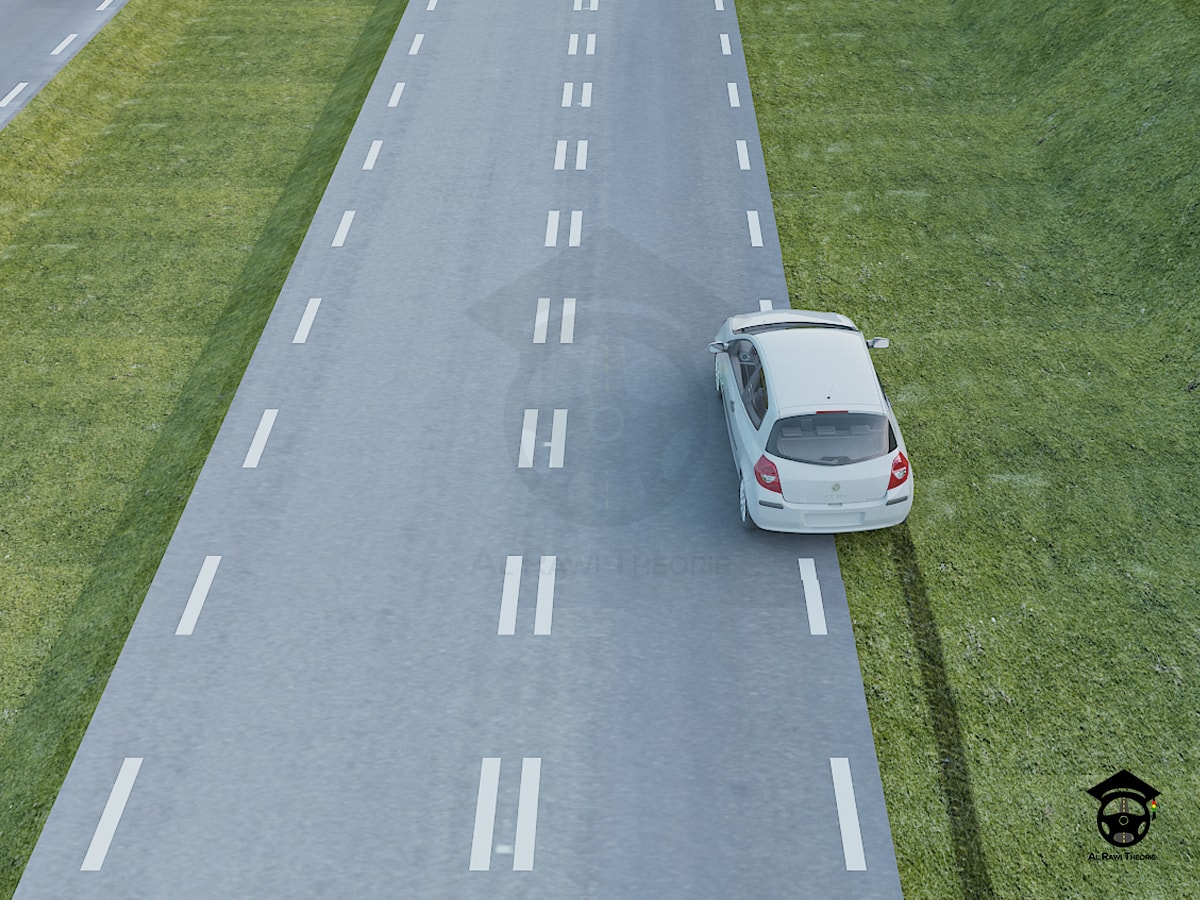
Reduce your speed and allow the car to stop. Using the brakes or moving the wheel abruptly may cause you to lose control of your car.
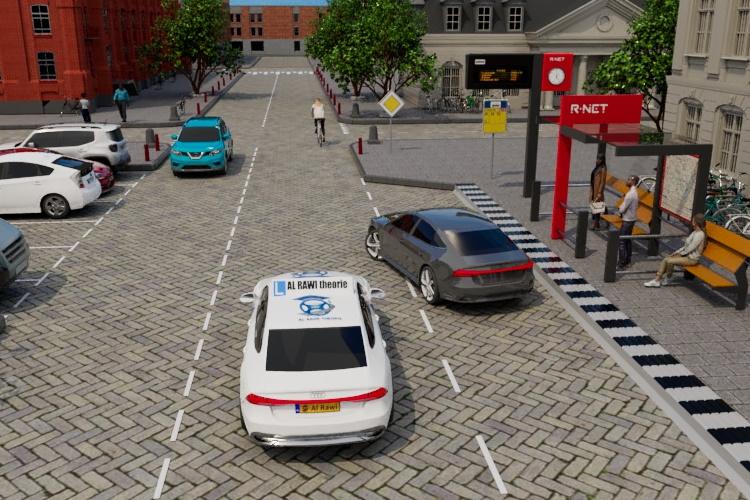
No. Within built-up areas you should only have to let buses that want to leave a bus stop go first.
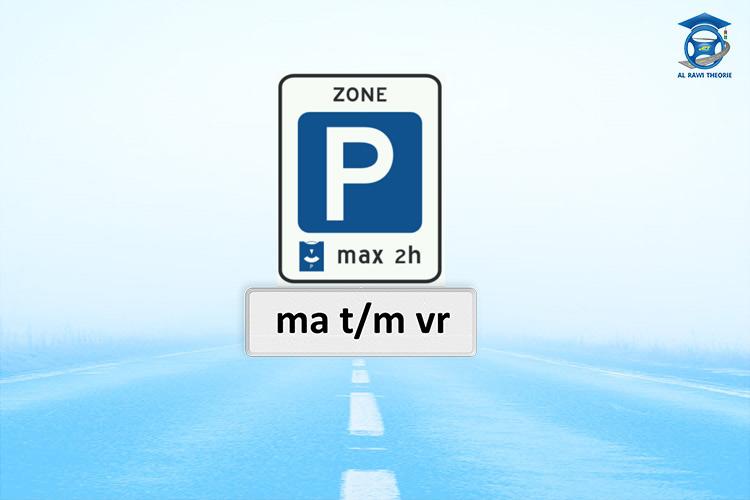
Yes you can use this area as free in the weekend. You can make parking for 2 hours.
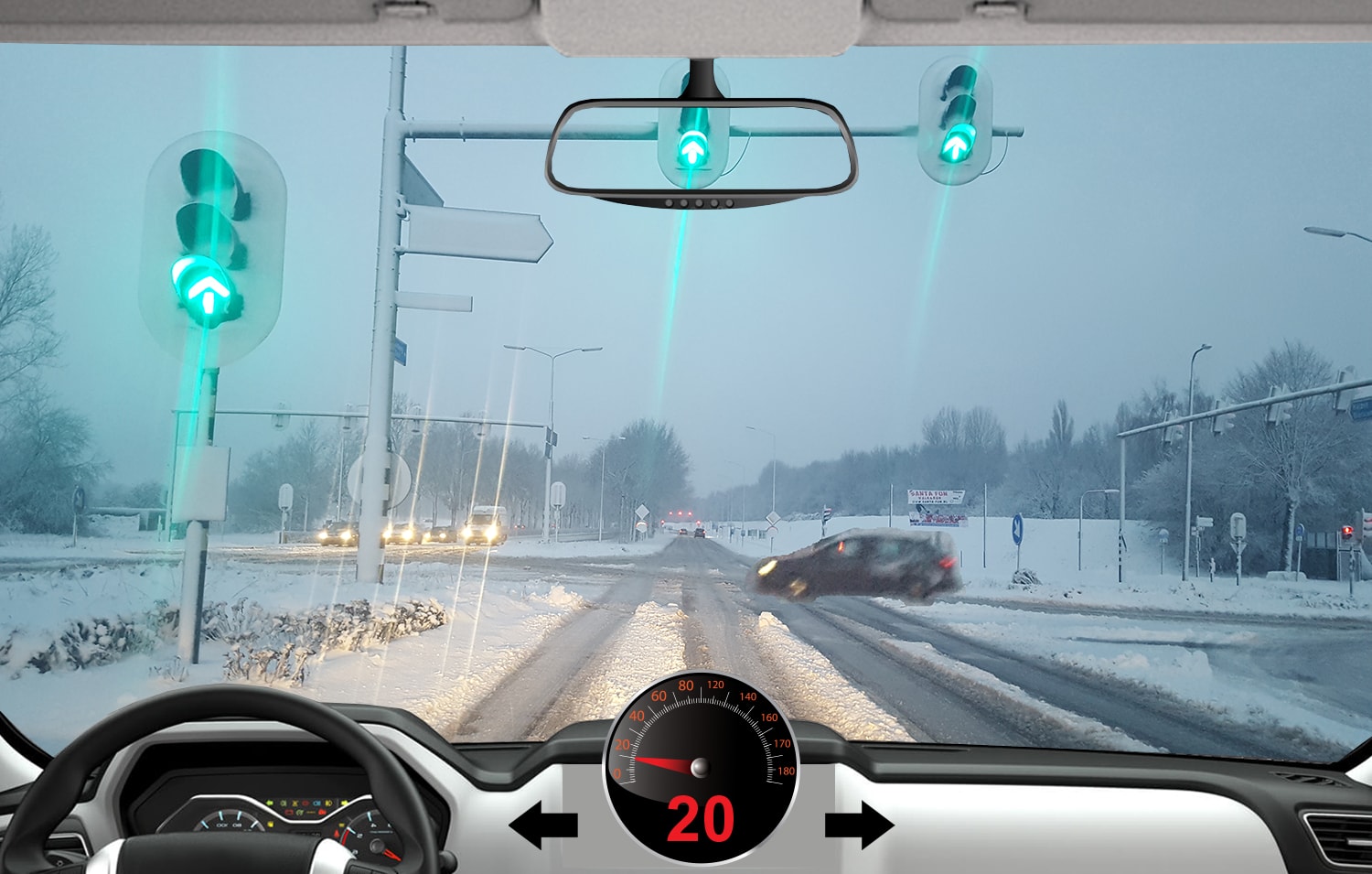
Remain stopped until the junction is entirely clear. Due to the snow, other drivers may slide into the intersection even if their light is yellow or red. Proceed with caution in these slippery conditions.
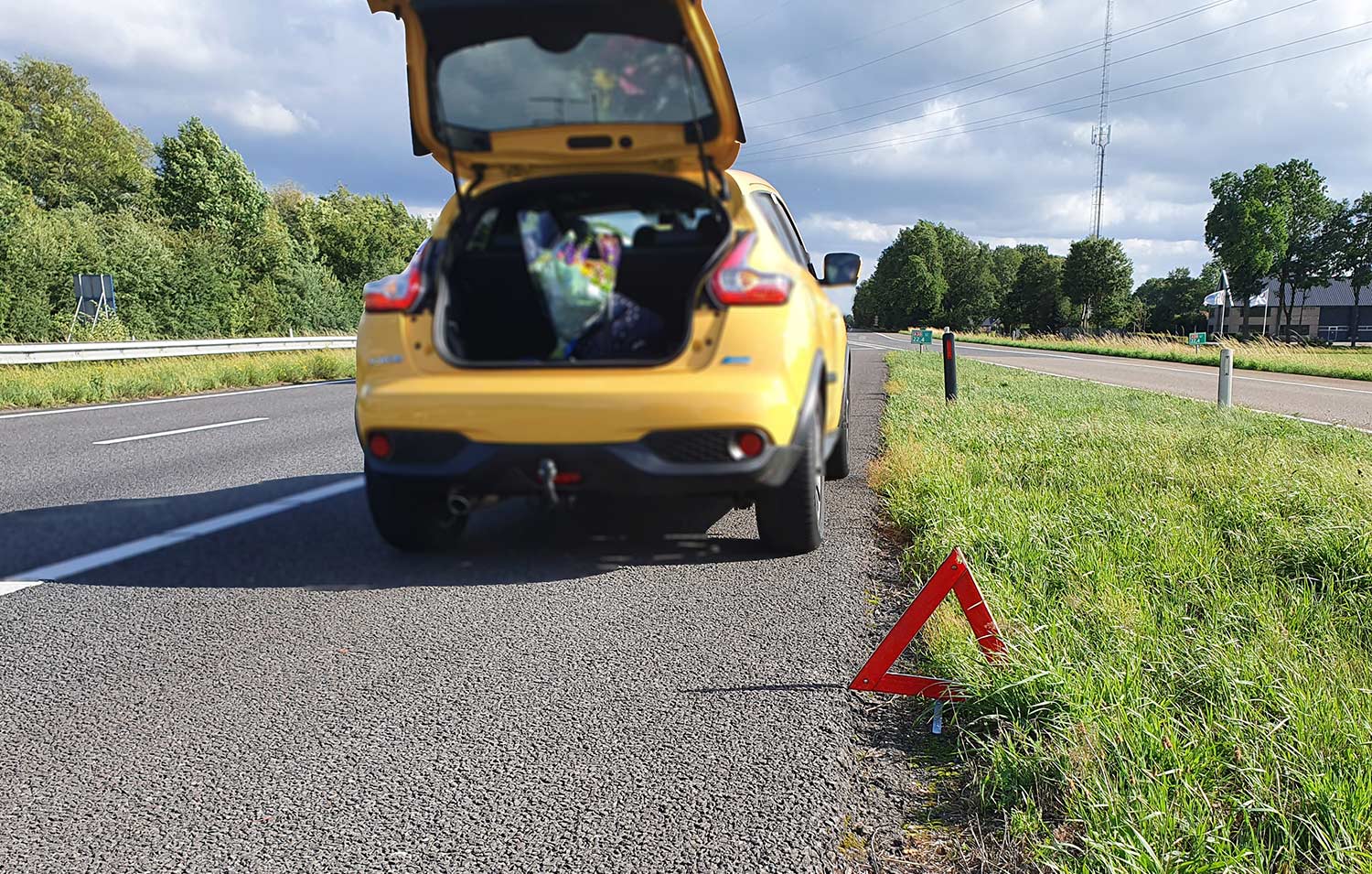
If you have breakdown or an accident and forms an obstacle to traffic, you are obliged to warn other road users with a warning triangle. If the hazard lights are switched on, you do not need to place a warning triangle. If the hazard lights are defect, place a warning triangle about 30m in the direction where the danger is caused. Make sure the triangle is clearly visible to other traffic. The warning triangle is not visible in this image.
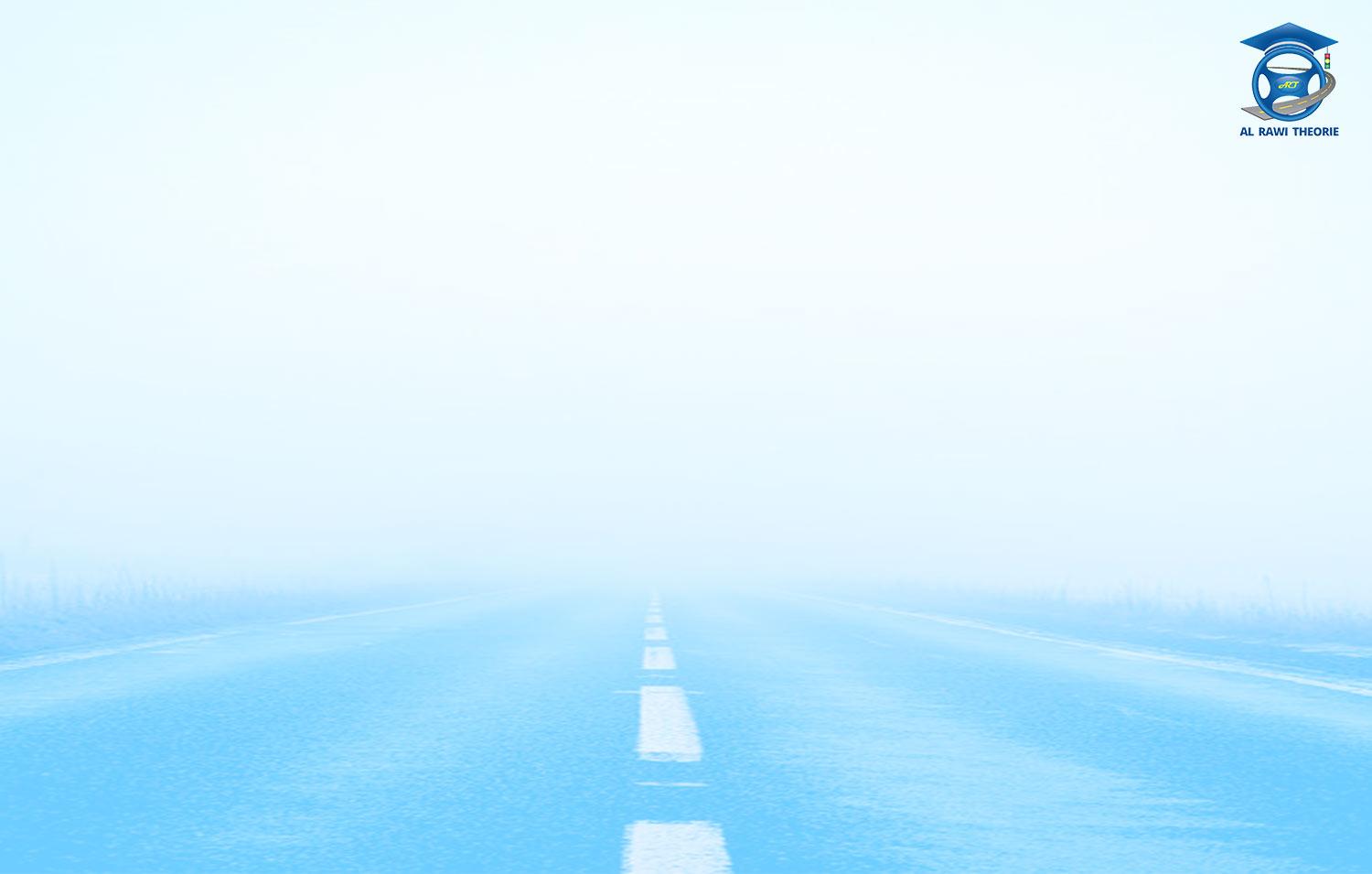
Do not touch the victim as he may have a severe injury due to the trauma in his neck. Call 112 and wait for emergency personnel.
consists of 12 questions about the knowledge you need to participate in traffic.
Take the time to read the questions carefully before you answer.
At least 10 of the 12 questions must have been answered correctly.
consists of 28 questions about traffic insight.
Take the time to read the questions carefully before you answer.
Of the 28 questions, you must have answered at least 25 correctly.